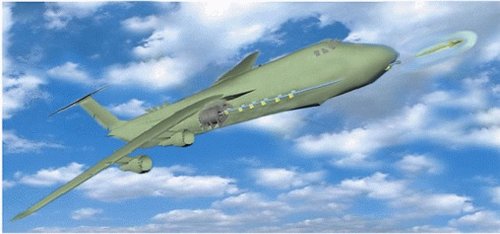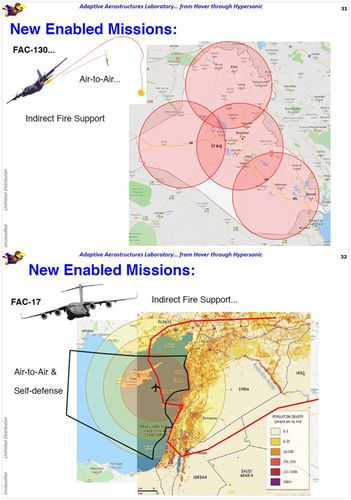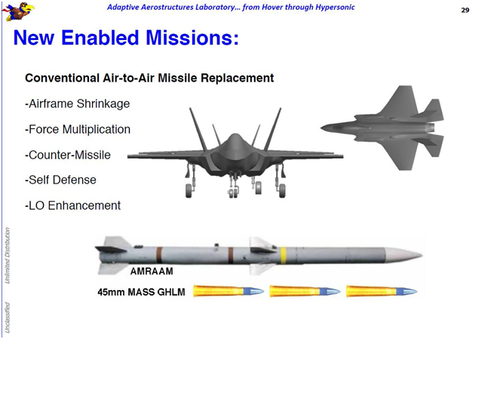The line of thought behind DEW implies substantial but not overwhelming power generation. Lasers want more continuous power, hard to say if HPM has similar requirement or more pulse based. If you accept that some pulse based power is present, then that could open up opportunities for ETC based guns. Railguns however require a much more serious pulsed power system though. The only immediate solution that comes to my mind is separating bullet from charge essentially, by using expendable cartridges containiing explosive flux compression generator packages. The cartridges functionally are like firing blanks, so point the cartridge chamber aft when firing, feed the generated pulse to the railgun itself while giving the projectile a compressed air puff to start sliding down the rails, and you might have a chemical-electric gun...
You are using an out of date browser. It may not display this or other websites correctly.
You should upgrade or use an alternative browser.
You should upgrade or use an alternative browser.
The future of aircraft mounted guns
- Thread starter jsport
- Start date
Avimimus
ACCESS: Top Secret
- Joined
- 15 December 2007
- Messages
- 2,427
- Reaction score
- 910
A case can probably be made for a gunship with a 35mm or 40mm cannon equipped to fire guided rounds (i.e. 15km ranges) as being more effective for its weight against some targets than bombs or guided rockets are. This assumes many fairly vulnerable targets that are spread out in a low-medium threat environment (i.e. no long range SAMs or enemy aircraft). One might even be able to make a case for a supersonic platform to get on orbit faster for CAS missions.
However, against larger targets and targets you don't dare get close to - if you don't need velocity - glide bombs will be more efficient. If you do need velocity, then rocket engines will be better...
However, against larger targets and targets you don't dare get close to - if you don't need velocity - glide bombs will be more efficient. If you do need velocity, then rocket engines will be better...
- Joined
- 21 May 2006
- Messages
- 3,002
- Reaction score
- 2,283
I'm very interested in that 105mm M2A2 howitzer/Douglas A-4 Skyhawk combination - does anyone know where I can find more info and clearer pictures??Given this is forum for mil tech mavens, it is weird wacky that folks some how think large gun on aircraft are strange.kaiserd said:jsport said:From cannonfighter PDFsferrin said:jsport said:sferrin said:jsport said:A gun was built and tested. guns simply deliver more payload per sortie than missiles ever will. period.
Is this supposed to be a joke?
Have you read any of the PDF around p 175 or are we off the cuffing..
I didn't see any PDFs that demonstrated a gun is going to deliver 4000lbs of BOOM in one sortie. Perhaps you could direct me to the relevant document?
Logistically a equivalent shell is always lighter than a missile. A heavy weight Paul Cyzsz would not have pursued this nor money be spent to build it if it didnt have some prospective serious advantage. For the equivalent size of the craft the more payload is always w/ a gun. The bigger the craft the more efficient large weights delivered at stand-off range
I had read the start of these comments and also assumed a joke or perhaps a significant translation/ cross-language terminology breakdown.
This is weird wacky stuff even in comparison with the more eccentric contributions you’d see on this site.
The Cavalier almost beat the A-10 a CAS aircraft as it hit tank size targets on the ground.
The B-25 75mm was use extensively in combat.
Other projects were killed by the missile mafia.
Shells 1/5th the payload of missiles
BTW A gun would not replace bombs or even all missiles. Strictly for standoff KE effects. the idea that artillery warheads are monolithic is moronic, A shell is just that. You can put anything mission payload one desires.
Raytheon is proposing 155mm rd that dive and reverse into a opposite slope emplacement. Guided shells can in fact maneuver.
Regards
Pioneer
Let me see if I'm following all this correctly. The initial concept was a 70s/80s answer to the Air Force, (we will run out of missiles long before they run out of tanks) Fulda Gap problem. A "fighter" armed with a high-power recoilless or low-recoil cannon was proposed which showed that such a concept could carry around 5 times as many usable rounds for such missions than assuming a standard missile lead-out. (The cited pdf comparison chart BTW I note compares the gun/cannon round to Air Intercept Missiles rather than ground targets warheads, but the text indicates use against ground targets. I will note that the inference of usability against air-to-air targets is apt since the flechette cloud described is a similar kill system to the AIM) The suggested "Cannon-Fighter" would use an integral cannon to launch many separate rounds that would use added propulsion and guidance to allow more and multiple engagement and kills per sortie.
I'm guessing this was split off a separate thread since it references "6th Generation Fighter" posts, with the "OP" having brought up the concept as having possible utility towards that goal. The premise would seem to be the utility over "bomb/missile-truck" configured current generation fighters due to an ability to carry more 'warheads' being able to be delivered from a longer 'stand-off' range' per sortie. On the opposition side I'm noting protests over the applicability to various missions, (BVR-A2A, hardened target, anti-tank/ground support, etc) over a dedicated missile type weapon or guided bomb.
There's nothing indicating that the "Cannon Fighter" couldn't carry standard missiles and bombs so the obsession with which system is 'better' is a bit disingenuous at best. It 'might' have been applicable in the original thread but here the main question is does carrying ANY type of gun relate to future fighter aircraft. I'd say yes they will and the Cannon Fighter particularly is an interesting concept.
LowObservable did in fact put it into context:
Note warhead size is subjective but the 105mm/90mm RR round and 105mm/155mm artillery warhead mass while about half or less than that of a standard AIM warhead can have the same fragment and penetration effect. They are of course vastly lighter than say an AGM or Guided-Bomb, but they are also vastly cheaper, even assuming "upgrades" such as guidance and propulsion for extended range and can have just as good damage effects. Range IS an issue compared to a missile but not as much as everyone seems to be thinking since "standard" artillery ranges with no augmentation is over 12 miles, (and keep in mind air-launched extends that with any kind of body lift on the shell) over 20 miles with rocket assist and that's far from the 'best' propulsion available. Currently ranges of over 60 to 100 miles are possible with ramjet powered (https://www.thedrive.com/the-war-zo...rtillery-shell-and-it-could-be-a-game-changer) rounds so even BVR-A2A missions could come within the capability of a "simple' gun system. (And we should keep in mind that "simple" sub-sonic ramjets can reach speeds in excess of Mach-8 so a dual-mode grain solid could 'cruise' at Mach 4 and then 'burst' to Mach 8 for final run-in)
Also as noted "gunship" type aircraft and/or mission become very much more capable when such augmentation is added to 35mm and 105mm projectiles extending ranges to well outside possible MANPAD and even some Anti-Aircraft Artillery ranges with little or no loss of accuracy or response time.
Now as the above article notes you'd essentially be launching 'mini-missiles' on some of the more sophisticated examples, (which some critics pointed out would be a 'better' idea anyway) with a simple and robust "launcher" that gives a more efficient initial speed boost than a simple rocket motor which has a lower detectability than a missile launch.
Combine this with the computerized weapons aiming system (F15-era Integrated Flight and Fire Control, https://www.ausairpower.net/AADR-IFFC-Sept-82.html) mentioned by Kcran567 (https://www.secretprojects.co.uk/th...ircraft-mounted-guns.31221/page-3#post-342959) and Low Observable (https://www.secretprojects.co.uk/th...ircraft-mounted-guns.31221/page-3#post-342964) and current data-sharing technology and it has a potential of being quite the potent weapon system. (And defensive as well. Imagine a flight of aircraft detecting one or more BVR missile launches, the Cannon Fighter aims and fires several 'beehive' rounds along the detected approach vectors where the shell internal seeker aligns and then detonates the warhead and each BVR runs into several large clouds of high closing speed flechettes, not to mention the launching aircraft getting some tossed their way too)
On the attack let me first say that long range missiles will still play a significant role but the idea of a 'cannon' armed version of a strike fighter or bomber has merit as well. For example the F-117 could only carry two (2) munitions (LGBs or gravity bombs due to way the weapons bay worked) or around 4,000lbs of striking power. Now imagine a version armed with say a single 105mm Recoilless Rifle type weapon (462lbs, but we'll assume a round 500lbs) with an autoloader, (can't find a weight for such a system but we'll say 200lbs, and add in another 340lbs for structure and ammo storage and feed system for a total of 1,040lbs) and various rounds of ammunition to (@134 rounds at 22lbs each, but we'll double it to 44lbs each to assume range extension and guidance are added so only 67 total rounds on-board) make up the 4,0000lb strike load of the F-117. Effective attack range is around 12 miles or more and the aircraft now has to capability of attacking over 10 different targets, (assuming three {3} rounds per target and keep in mind the F-117's "job" is mostly air defense suppression with some deep strike missions) on a single sortie rather than just two. Does it have the impact of 2,000lbs of an HE guided bomb? No but do you NEED that much impact when you can attack literally 10 times the targets with a single aircraft/sortie? And I'm assuming using the "light-weight" RR rounds instead of the heavier standard artillery rounds which you can do using a liquid/ECT or other firing method, at which point your "load" is of course reduced,(103lbs per 155 round, 19lbs for a 105mm) but all your performance metrics go up as well. (And since you're flying an aircraft with on-board aircraft fuel a liquid firing system may in fact make sense despite the complexity, you also have other options for recoil reduction)
Now how 'stealthy' such a cannon-armed aircraft may or may not be is a question that would need to be answered but the possible benefits are there to do a proper trade-off with. Can it work? Sure there's no question there. Would it be worth pursuing? Maybe, again the trade-offs are there and it really depends on the mission and context if it would be right for any 'general' fighter type or only in a specialized role. The idea for use on a "gunship" class aircraft is most certainly quite interesting and viable, its use in other airframes isn't so straight forward but is certainly plausible and worthy of consideration.
Randy
Edit: Re-read the posted report and it was in fact a late-study which is even more interesting
Looked for either the Texas Instruments 105mm Guided Anti-Tank Projectile on-line and the searches default to either the Javlin ATGM (https://en.wikipedia.org/wiki/FGM-148_Javelin) or the Copperhead CLPG (https://en.wikipedia.org/wiki/M712_Copperhead) which I'm guessing it's a version of the latter. Similarly looking for the General Electric Armament Systems RR just defaults to the standard M40 RR (https://en.wikipedia.org/wiki/M40_recoilless_rifle) so nothing there but the weapon system is still in use and production in other nations so...
And since we're on the subject there's even other options such as a new system based on the M3/M4 (Carl Gustaf, https://en.wikipedia.org/wiki/Carl_Gustaf_recoilless_rifle) which has gotten a guidence system (https://www.popularmechanics.com/mi...less-rifle-carl-gustav-laser-guided-warheads/) in 84mm. And while expensive in the main guided, extended range artillary is becoming pretty common.
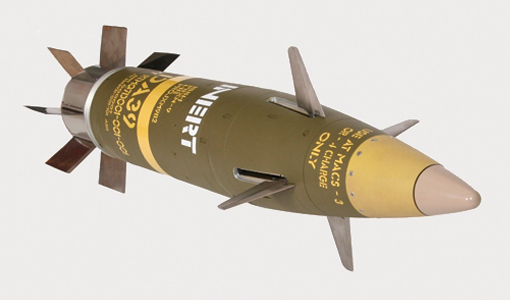
 en.wikipedia.org
en.wikipedia.org
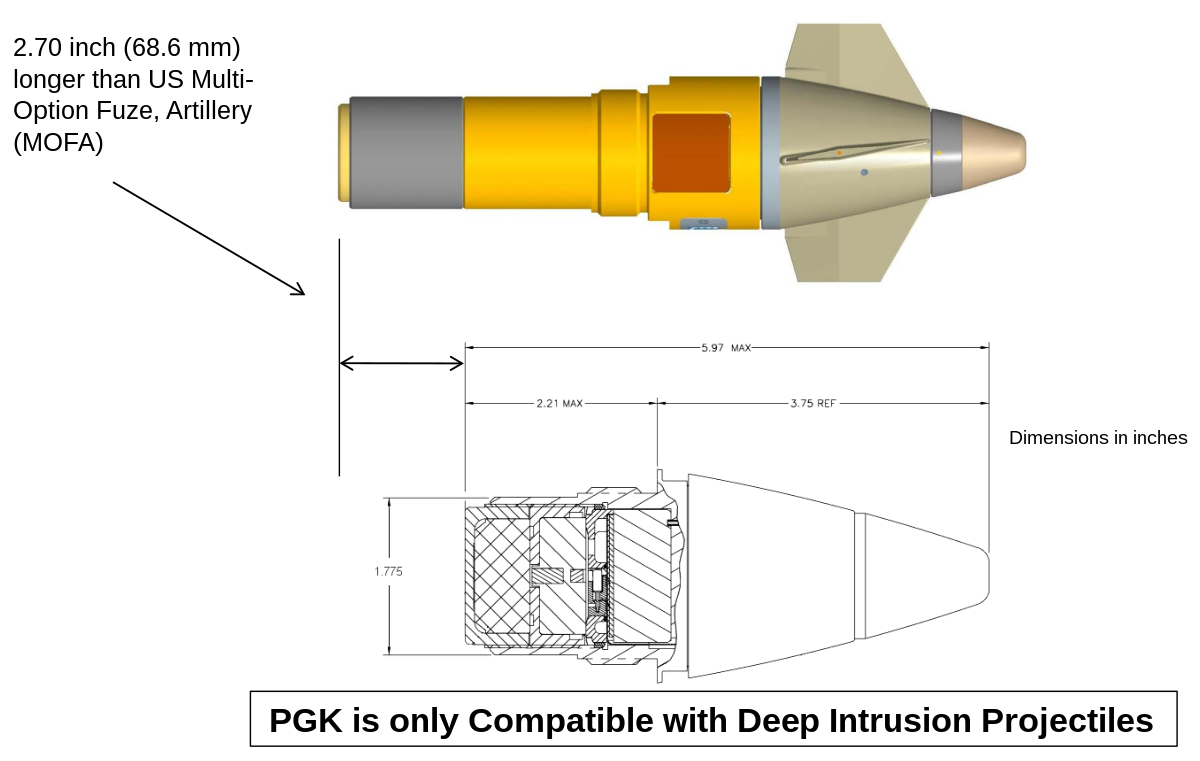
 en.wikipedia.org
en.wikipedia.org
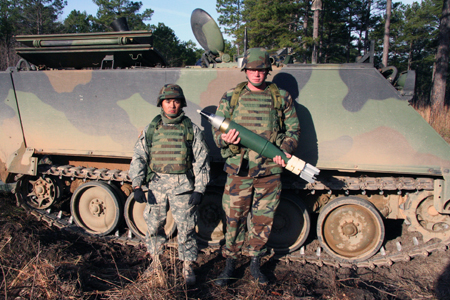
 en.wikipedia.org
en.wikipedia.org
I'm guessing this was split off a separate thread since it references "6th Generation Fighter" posts, with the "OP" having brought up the concept as having possible utility towards that goal. The premise would seem to be the utility over "bomb/missile-truck" configured current generation fighters due to an ability to carry more 'warheads' being able to be delivered from a longer 'stand-off' range' per sortie. On the opposition side I'm noting protests over the applicability to various missions, (BVR-A2A, hardened target, anti-tank/ground support, etc) over a dedicated missile type weapon or guided bomb.
There's nothing indicating that the "Cannon Fighter" couldn't carry standard missiles and bombs so the obsession with which system is 'better' is a bit disingenuous at best. It 'might' have been applicable in the original thread but here the main question is does carrying ANY type of gun relate to future fighter aircraft. I'd say yes they will and the Cannon Fighter particularly is an interesting concept.
LowObservable did in fact put it into context:
While Cannon Fighter depended on a somewhat back-of-the-envelope vehicle and weapon concept and fairly basic ops analysis, it was a serious effort by one of the industry's most innovative thinkers and skilled engineers (Barnes Wallis meets Burt Rutan?) to deal with the Fulda Gap problem (we ran out of anti-armor fires before they ran out of tanks) in the early evolution of the Air Land Battle concept.
The requirement was to put a whole lot of high-Pk fires into the target area without getting killed (the latter being the drawback of the 30-mm.).
It used technology that was futuristic, but real (such as IFFC and guided rounds, and remote-set fused frag rounds). I suspect AWACS is a surrogate for the early Pave Mover concept, which was sensitive at the time.
Now that guided rounds are a reality and migrating into smaller calibers, the gun could make a serious comeback.
Note warhead size is subjective but the 105mm/90mm RR round and 105mm/155mm artillery warhead mass while about half or less than that of a standard AIM warhead can have the same fragment and penetration effect. They are of course vastly lighter than say an AGM or Guided-Bomb, but they are also vastly cheaper, even assuming "upgrades" such as guidance and propulsion for extended range and can have just as good damage effects. Range IS an issue compared to a missile but not as much as everyone seems to be thinking since "standard" artillery ranges with no augmentation is over 12 miles, (and keep in mind air-launched extends that with any kind of body lift on the shell) over 20 miles with rocket assist and that's far from the 'best' propulsion available. Currently ranges of over 60 to 100 miles are possible with ramjet powered (https://www.thedrive.com/the-war-zo...rtillery-shell-and-it-could-be-a-game-changer) rounds so even BVR-A2A missions could come within the capability of a "simple' gun system. (And we should keep in mind that "simple" sub-sonic ramjets can reach speeds in excess of Mach-8 so a dual-mode grain solid could 'cruise' at Mach 4 and then 'burst' to Mach 8 for final run-in)
Also as noted "gunship" type aircraft and/or mission become very much more capable when such augmentation is added to 35mm and 105mm projectiles extending ranges to well outside possible MANPAD and even some Anti-Aircraft Artillery ranges with little or no loss of accuracy or response time.
Now as the above article notes you'd essentially be launching 'mini-missiles' on some of the more sophisticated examples, (which some critics pointed out would be a 'better' idea anyway) with a simple and robust "launcher" that gives a more efficient initial speed boost than a simple rocket motor which has a lower detectability than a missile launch.
Combine this with the computerized weapons aiming system (F15-era Integrated Flight and Fire Control, https://www.ausairpower.net/AADR-IFFC-Sept-82.html) mentioned by Kcran567 (https://www.secretprojects.co.uk/th...ircraft-mounted-guns.31221/page-3#post-342959) and Low Observable (https://www.secretprojects.co.uk/th...ircraft-mounted-guns.31221/page-3#post-342964) and current data-sharing technology and it has a potential of being quite the potent weapon system. (And defensive as well. Imagine a flight of aircraft detecting one or more BVR missile launches, the Cannon Fighter aims and fires several 'beehive' rounds along the detected approach vectors where the shell internal seeker aligns and then detonates the warhead and each BVR runs into several large clouds of high closing speed flechettes, not to mention the launching aircraft getting some tossed their way too)
On the attack let me first say that long range missiles will still play a significant role but the idea of a 'cannon' armed version of a strike fighter or bomber has merit as well. For example the F-117 could only carry two (2) munitions (LGBs or gravity bombs due to way the weapons bay worked) or around 4,000lbs of striking power. Now imagine a version armed with say a single 105mm Recoilless Rifle type weapon (462lbs, but we'll assume a round 500lbs) with an autoloader, (can't find a weight for such a system but we'll say 200lbs, and add in another 340lbs for structure and ammo storage and feed system for a total of 1,040lbs) and various rounds of ammunition to (@134 rounds at 22lbs each, but we'll double it to 44lbs each to assume range extension and guidance are added so only 67 total rounds on-board) make up the 4,0000lb strike load of the F-117. Effective attack range is around 12 miles or more and the aircraft now has to capability of attacking over 10 different targets, (assuming three {3} rounds per target and keep in mind the F-117's "job" is mostly air defense suppression with some deep strike missions) on a single sortie rather than just two. Does it have the impact of 2,000lbs of an HE guided bomb? No but do you NEED that much impact when you can attack literally 10 times the targets with a single aircraft/sortie? And I'm assuming using the "light-weight" RR rounds instead of the heavier standard artillery rounds which you can do using a liquid/ECT or other firing method, at which point your "load" is of course reduced,(103lbs per 155 round, 19lbs for a 105mm) but all your performance metrics go up as well. (And since you're flying an aircraft with on-board aircraft fuel a liquid firing system may in fact make sense despite the complexity, you also have other options for recoil reduction)
Now how 'stealthy' such a cannon-armed aircraft may or may not be is a question that would need to be answered but the possible benefits are there to do a proper trade-off with. Can it work? Sure there's no question there. Would it be worth pursuing? Maybe, again the trade-offs are there and it really depends on the mission and context if it would be right for any 'general' fighter type or only in a specialized role. The idea for use on a "gunship" class aircraft is most certainly quite interesting and viable, its use in other airframes isn't so straight forward but is certainly plausible and worthy of consideration.
Randy
Edit: Re-read the posted report and it was in fact a late-study which is even more interesting
Looked for either the Texas Instruments 105mm Guided Anti-Tank Projectile on-line and the searches default to either the Javlin ATGM (https://en.wikipedia.org/wiki/FGM-148_Javelin) or the Copperhead CLPG (https://en.wikipedia.org/wiki/M712_Copperhead) which I'm guessing it's a version of the latter. Similarly looking for the General Electric Armament Systems RR just defaults to the standard M40 RR (https://en.wikipedia.org/wiki/M40_recoilless_rifle) so nothing there but the weapon system is still in use and production in other nations so...
And since we're on the subject there's even other options such as a new system based on the M3/M4 (Carl Gustaf, https://en.wikipedia.org/wiki/Carl_Gustaf_recoilless_rifle) which has gotten a guidence system (https://www.popularmechanics.com/mi...less-rifle-carl-gustav-laser-guided-warheads/) in 84mm. And while expensive in the main guided, extended range artillary is becoming pretty common.

M982 Excalibur - Wikipedia

M1156 precision guidance kit - Wikipedia

XM395 precision guided mortar munition - Wikipedia
Last edited:
I'm very interested in that 105mm M2A2 howitzer/Douglas A-4 Skyhawk combination - does anyone know where I can find more info and clearer pictures??
Regards
Pioneer
Found a bigger picture, (https://www.secretprojects.co.uk/attachments/davis-gun-recoilless-a4-png.598056/) on this forum thread:
But no further information though I'll note the picture is titled "Davis-gun-recoilless-a4" which probably means it was acutally (as the pic says) two 'back-to-back' standard howitzer's with the rearward firing one throwing out a weight to counter the shell mass instead of a back-blast recoiless system..
Randy
Hello all, Just come across your discussions.
This led me to check the F35, it can carry 22,000 lbs including such goodies as the SDB - small diameter bomb.
The old methodology was to drop a dumb 1000 pounder on things, then we got the paveway, which improved the kill rate.
I would suggest that the bomb v shell will ultimately meet in the middle.
In general terms it costs as much to put a guidance system onto a shell, as it does to put one on a rocket - thus making a guided missile.
The marketing departments are telling the missile guys to go smaller, and the shell guys to add guidance etc etc.
Allready for the 'small' kill task, you can have a guided 70mm rocket, an SDB, a guided mortar round, a full ATGW, Hellfire/brimstone, Garl Gustav etc. A MBT-gun-launched-ATGW, artillery launched missile, guided arty shell, and probably some others.
Horses for courses.
Back to the Fulda gap - if your aircraft has an unguided shell x 30, its fairly easy to engineer a response to this, more tracked AA, more manpads, barrage balloon(add a claymore and you have your area blast) anyone? Your aircraft/pilot isn't going to make it back to base for a second sortie.
Guided shell, who is guiding it? Ground troops? Laser? this is a much different environment to the Iraqis sitting in the Kuwaiti desert waiting their turn to be illuminated. How many channels did the laser designators have back then? I dont think you can have 30 shells/missiles flying in the same area, they may only strike the nearest tank with the right laser code coming off it.
just my thoughts.
This led me to check the F35, it can carry 22,000 lbs including such goodies as the SDB - small diameter bomb.
The old methodology was to drop a dumb 1000 pounder on things, then we got the paveway, which improved the kill rate.
I would suggest that the bomb v shell will ultimately meet in the middle.
In general terms it costs as much to put a guidance system onto a shell, as it does to put one on a rocket - thus making a guided missile.
The marketing departments are telling the missile guys to go smaller, and the shell guys to add guidance etc etc.
Allready for the 'small' kill task, you can have a guided 70mm rocket, an SDB, a guided mortar round, a full ATGW, Hellfire/brimstone, Garl Gustav etc. A MBT-gun-launched-ATGW, artillery launched missile, guided arty shell, and probably some others.
Horses for courses.
Back to the Fulda gap - if your aircraft has an unguided shell x 30, its fairly easy to engineer a response to this, more tracked AA, more manpads, barrage balloon(add a claymore and you have your area blast) anyone? Your aircraft/pilot isn't going to make it back to base for a second sortie.
Guided shell, who is guiding it? Ground troops? Laser? this is a much different environment to the Iraqis sitting in the Kuwaiti desert waiting their turn to be illuminated. How many channels did the laser designators have back then? I dont think you can have 30 shells/missiles flying in the same area, they may only strike the nearest tank with the right laser code coming off it.
just my thoughts.
- Joined
- 11 February 2007
- Messages
- 2,572
- Reaction score
- 4,384
I'll note the picture is titled "Davis-gun-recoilless-a4" which probably means it was acutally (as the pic says) two 'back-to-back' standard howitzer's with the rearward firing one throwing out a weight to counter the shell mass instead of a back-blast recoiless system..
Guessing the weight of two back-to-back barrels as about the same as a single M101 howitzer, so about 2000kg, and looking up the standard HE shell for the M101 as having an about 2kg filler, that means its single shot was throwing 0.1% of its hang weight in explosive. That's absolutely terrible in comparison to weight of explosive on target for any dropped ordnance I can think of, and powered ordnance isn't that far behind. Okay a single shot weapon is the worst form of this concept, and Davis guns are the least effective form of recoilless weapons in terms of explosive on target vs system mass, but it's still not great.
- Joined
- 11 February 2007
- Messages
- 2,572
- Reaction score
- 4,384
In general terms it costs as much to put a guidance system onto a shell, as it does to put one on a rocket - thus making a guided missile.
Roughly, though worth noting it's actually more expensive for the shell as you need the electronics to withstand a higher initial acceleration.
Back to the Fulda gap - if your aircraft has an unguided shell x 30, its fairly easy to engineer a response to this, more tracked AA, more manpads, barrage balloon(add a claymore and you have your area blast) anyone? Your aircraft/pilot isn't going to make it back to base for a second sortie.
Worth remembering the USAF did have a system deployed over the Fulda Gap with a direct fire AT gun - the A-10 and the GAU-8/A Avenger with about 18 shots available given a 1 second burst. Of course the A-10 concept shifted over considering the Maverick the principle anti-armour weapon almost as soon as it was fielded, which is rather indicative of what the people involved thought about the idea for flying straight at your target with your finger on the trigger.
You can forget barrage balloons though, the whole point of the Fulda Gap was the Soviets trying to punch an Operational Manouevre Group into the US rear before REFORGER could solidify the front and if you're charging forward as the tip of the spear of 8th Guards Tank Army you're going to wrap your balloon around the first set of powerlines you come to.
In general terms it costs as much to put a guidance system onto a shell, as it does to put one on a rocket - thus making a guided missile.
Roughly, though worth noting it's actually more expensive for the shell as you need the electronics to withstand a higher initial acceleration.
Back to the Fulda gap - if your aircraft has an unguided shell x 30, its fairly easy to engineer a response to this, more tracked AA, more manpads, barrage balloon(add a claymore and you have your area blast) anyone? Your aircraft/pilot isn't going to make it back to base for a second sortie.
Worth remembering the USAF did have a system deployed over the Fulda Gap with a direct fire AT gun - the A-10 and the GAU-8/A Avenger with about 18 shots available given a 1 second burst. Of course the A-10 concept shifted over considering the Maverick the principle anti-armour weapon almost as soon as it was fielded, which is rather indicative of what the people involved thought about the idea for flying straight at your target with your finger on the trigger.
You can forget barrage balloons though, the whole point of the Fulda Gap was the Soviets trying to punch an Operational Manouevre Group into the US rear before REFORGER could solidify the front and if you're charging forward as the tip of the spear of 8th Guards Tank Army you're going to wrap your balloon around the first set of powerlines you come to.
Yes the A10 didn't last long as a gun truck, then ended up as one in Iraq/Afghanistan.
US Rear = Germany.
You have to admit T62's with a barrage balloon would be pretty cool, with a giant
Hello all, Just come across your discussions.
I just 'jumped' in as well but welcome all the same
This led me to check the F35, it can carry 22,000 lbs including such goodies as the SDB - small diameter bomb.
I'm finding 18,000lbs including internal bays but close enough
The old methodology was to drop a dumb 1000 pounder on things, then we got the paveway, which improved the kill rate.
Well, technically there might be 500lb, 750lb, etc in there as well but in general yes the addition of the ability to guide-to-target was a big game changer.
I would suggest that the bomb v shell will ultimately meet in the middle.
Quite likely but then I'm not "wedded" to the concept but I think it deserves more discussion than it was getting. The main issue I see is any "cannon" armed aircraft is likely to be carrying the thing and ammo internally so there's a HUGE issue right there. On the other hand you'd pretty much automatically get a bit wider range of options from that start. Trades as usual
In general terms it costs as much to put a guidance system onto a shell, as it does to put one on a rocket - thus making a guided missile.
Pretty much but a missile has to be an all-inclusive system and usually a single-mission design at that. (Not a bad thing per-se just a point) Whereas "artillary" by it's nature can change (somewhat) the fire-mission on the fly which has advantages. I'd see this as more of a 'dial-a-capability' system but how effective it would be is the question. As noted, you get a 2,000lb warhead 'on-target' with an AGM and a 90lb shrapnel burst to kill another aircraft from an AIM. Here you'd have something like a 10lb to 20lb (for the light weigth RR shells) HE weight that may have less overall "umph" but be a more effective delivery system.
The marketing departments are telling the missile guys to go smaller, and the shell guys to add guidance etc etc.
Actually this trend is "customer" driven as the military is needing different requirements, in part due to the changes we're discussing. For example the SDB came about because you could not put LESS explosive more accuratly "on-target" and therefor it was/is more effective to have 4 SDB rather than one 2000lb guided bomb. Guidance on artillary shells has been a "want-to-have" for a VERY long time as the saying goes "friendly-fire-isn't"
All ready for the 'small' kill task, you can have a guided 70mm rocket, an SDB, a guided mortar round, a full ATGW, Hellfire/brimstone, Garl Gustav etc. A MBT-gun-launched-ATGW, artillery launched missile, guided arty shell, and probably some others.
Yep and the overlap is getting quite noticible with the Navy and Army both looking to use each others 'stuff' because it actually works rather than it being forced upon them. Go figure
But in context it would actually be a plus if all the services could, (and it worked and was not forced) use a lot of the same equipment.
Horses for courses.
As always Your Mileage May Vary and all that
Back to the Fulda gap - if your aircraft has an unguided shell x 30, its fairly easy to engineer a response to this, more tracked AA, more manpads, barrage balloon(add a claymore and you have your area blast) anyone? Your aircraft/pilot isn't going to make it back to base for a second sortie.
That was actually the point of the cited paper, guidance was assumed since the entire point was to enage and destroy the targets at or beyond the range of the AGM-65 (13 miles) on the A-10 with a higher pilot survivablity potential.
Guided shell, who is guiding it? Ground troops? Laser? this is a much different environment to the Iraqis sitting in the Kuwaiti desert waiting their turn to be illuminated. How many channels did the laser designators have back then? I dont think you can have 30 shells/missiles flying in the same area, they may only strike the nearest tank with the right laser code coming off it.
Odd thing about lasers is "channels" aren't a thing but pulse rates are and you can (in theory at least) have thousands if the laser generator can scan and pulse the targets freely. But in context it looked like it would be several dedicated "lasing" aircraft and/or ground transmitters painting the forward lines as they came in. The alternate seems to have been, (as I noted in my edit which you probably missed since I posted it JUST as you did
just my thoughts.
Welcomed
Guessing the weight of two back-to-back barrels as about the same as a single M101 howitzer, so about 2000kg, and looking up the standard HE shell for the M101 as having an about 2kg filler, that means its single shot was throwing 0.1% of its hang weight in explosive. That's absolutely terrible in comparison to weight of explosive on target for any dropped ordnance I can think of, and powered ordnance isn't that far behind. Okay a single shot weapon is the worst form of this concept, and Davis guns are the least effective form of recoilless weapons in terms of explosive on target vs system mass, but it's still not great.
I'll be honest I'm still trying to figure out what was going on in someone's head to even consider the idea. The OV10 mounted semi-automatic RR system at least had a plausible rationale and resasoning, but that?
Roughly, though worth noting it's actually more expensive for the shell as you need the electronics to withstand a higher initial acceleration.
Yes but in context the Navy had already been working that problem since WWII so the Army just took advantage
Worth remembering the USAF did have a system deployed over the Fulda Gap with a direct fire AT gun - the A-10 and the GAU-8/A Avenger with about 18 shots available given a 1 second burst. Of course the A-10 concept shifted over considering the Maverick the principle anti-armour weapon almost as soon as it was fielded, which is rather indicative of what the people involved thought about the idea for flying straight at your target with your finger on the trigger.
At the time, (70s) it was expected that the ability of the A10 to 'mix-it-up' in the terrain clutter like a helicopter was going to be major increase in survivability. They later began to second guess this by the mid-80s and almost "gave" the A10s to the Army as spotter aircraft but even before the Gulf War (1st version) it was becoming obvious that that was more true than had been thought. Still, the ability to shoot from further than they can (in theory) shoot back is always a plus and why the Mavrick and A10 'clicked' so well. In context the GAU-8 was always supposed to e more for attacking 'soft' targerts such as transports than for actually killing tanks because, (as you both note) getting THAT close to the enemy is always a bad thing. (Oddly enough the A10s have a good number of "air-to-air" kills with the GAU-8 in exercises because "fast mover" jokey's see a lone A10 and get cocky for a 'gun' kill... Right up till the trailing A10 'burps' the GAU-8
In a similar vein that's also the reason the later models of the AC-130 went with a 25mm gatling gun since it provides a heavier penatration with a longer range than the 20mm while not massing as much as trying to carry a couple of GAU-8's on the airframe
You can forget barrage balloons though, the whole point of the Fulda Gap was the Soviets trying to punch an Operational Manouevre Group into the US rear before REFORGER could solidify the front and if you're charging forward as the tip of the spear of 8th Guards Tank Army you're going to wrap your balloon around the first set of powerlines you come to.
You have to admit T62's with a barrage balloon would be pretty cool, with a gianton it.
He's got a point there
I was more thinking stick them on the arty/command group, as you end up overflying them anyway, on your gun run. Imagine being the pilot, you want me to do what?? And what do I do after hitting that first tank? I mean the soviet tanks didn't put 12.7 and 13.5 MG's on the roof of their tanks for no reason.
They did but not really for anti-air but anti-infantry. That's what the ZEU-23s were for after all
Again, so we're on the same page, the idea was the Cannon Fighter would be able to loft/launch a lot of anti-armor guided shells from well outside the range of mobile anti-air assets. In addition since the rounds would be coming in from 'above' there was higher chance the shells would penetrate the upper armor better than a ground shot. (Similar thinking went into the Mavrick but they opted for a larger warhead because you couldn't be sure) And I'll also point out the cited paper says the study actually competed the Cannon Fighter not only against the A10 but the F15 as well with both armed with Mavrick missiles.
And again I'm going to be wondering why this concept came about in the late 1990s as a "technology evaluation" contract since the scenerio and situation are VERY much more "70s/80s" than 1997-ish. One thing to note is the cited "Cannon Fighter" concept was based on an MD Vectored LIft fighter fuselage due to wanting an airframe that could allow the fuselage to be "independently aimed in elevation and azimuth" while the aircraft actually maintained a constant heading and speed vector.
Randy
- Joined
- 11 February 2007
- Messages
- 2,572
- Reaction score
- 4,384
And again I'm going to be wondering why this concept came about in the late 1990s as a "technology evaluation" contract since the scenerio and situation are VERY much more "70s/80s" than 1997-ish. One thing to note is the cited "Cannon Fighter" concept was based on an MD Vectored LIft fighter fuselage due to wanting an airframe that could allow the fuselage to be "independently aimed in elevation and azimuth" while the aircraft actually maintained a constant heading and speed vector.
Possibly trying to see whether the idea of post-stall manouevring/pointing the nose independent of the velocity vector might have A-G applicability as well as A-A? ie potentially driven by the aircraft more than the payload. It's a little late for the heyday of X-31 etc, but not by much, and if you want to look at a gun-based armament, then what's the most effective kind of gun we could use comes into play.
But I'd still rather pop off a load of Brimstone from the far side of the nearest hill.
And again I'm going to be wondering why this concept came about in the late 1990s as a "technology evaluation" contract since the scenerio and situation are VERY much more "70s/80s" than 1997-ish. One thing to note is the cited "Cannon Fighter" concept was based on an MD Vectored LIft fighter fuselage due to wanting an airframe that could allow the fuselage to be "independently aimed in elevation and azimuth" while the aircraft actually maintained a constant heading and speed vector.
Possibly trying to see whether the idea of post-stall manouevring/pointing the nose independent of the velocity vector might have A-G applicability as well as A-A? ie potentially driven by the aircraft more than the payload. It's a little late for the heyday of X-31 etc, but not by much, and if you want to look at a gun-based armament, then what's the most effective kind of gun we could use comes into play.
But I'd still rather pop off a load of Brimstone from the far side of the nearest hill.
Read CAREFULLY, (damned skimming) through it again and while it stated the study was done in 1997 further in the text it states the study was done in 1977 so I'm suspecting a missed error in the original date
In fact the reason for the nose-independent flight path WAS so it could service both AA targets if need be as well as multiple AG targets. Key point was that the aircraft would have an integrated Flight and Firing system once the ground targets were IDed in the system the pilot and computer would set the firing run and target que and plot the general flight path. Once initiated the pilot would fly the aircraft while the computer would fire the gun, (I was right, three {3} rounds per target sector) with the computer using the planes date to compute each shot. Since you could (assuming a good autoloader and selector system) switch rounds on the fly the system would use threat detection to assess airborne and anti-air threats during the attack run. If an anti-air missile or activily hostile (it was generally assumed they would ignore 'non-threatening aircraft targets) aircraft was detected the pilot could input an interupt and the computer would switch to anti-air rounds and fire automatically to intercept the intercept as it were, then return to the ground target mission. (Figuring the air-intercept trajectory is fairly straight forward and considering the 'target' probably won't see the round coming, 19,000 flechettes will give you about a 100 meter "kill" zone for any aircraft or missile incoming) Which was a specific 'selling' point of the Cannon Fighter concept since it would not have to interrupt the ground attack run to 'service' air-to-air, or ground-to-air threats.
I'd suggest a 'modern' alternative to the MD aircraft would be a modified F-15 (https://en.wikipedia.org/wiki/McDonnell_Douglas_F-15_STOL/MTD) or F-16 (http://www.f-16.net/f-16_versions_article15.html, https://www.nasa.gov/centers/dryden/multimedia/imagegallery/F-16AFTI/F-16AFTI_proj_desc.html) with such a system mounted. (Going to take some work to do, might get it into a FAST pack set up. (https://www.thedrive.com/the-war-zo...for-u-s-f-15c-eagles-and-conformal-fuel-tanks)
Well yes a Brimstone or Hellfire would work as well but this has about the same range increment, (12+ miles unless your a helo and then you're a little close, a bit over 7miles, for my taste) with a bit 'stealthy-er' launch and flight system, (A "bit" if it's rocket assisted, a bit less if it's ramjet powered but in the latter case it's coming in a LOT faster, a lot if it's ballistic/glide) as well as maybe twice the 'shots' per sortie? Could be a wash but maybe not.
(And what are you doing flying around at 500mph 'behind a hill' anyway?
Randy
I think you better off with mini-missiles and bombs than a big gun
Why make the effort to carry a big caliber gun with high recoil when you can already carry 20-24 mini cruise missile




Why make the effort to carry a big caliber gun with high recoil when you can already carry 20-24 mini cruise missile
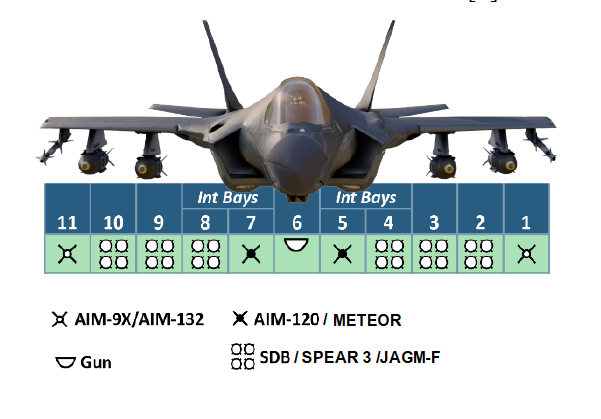
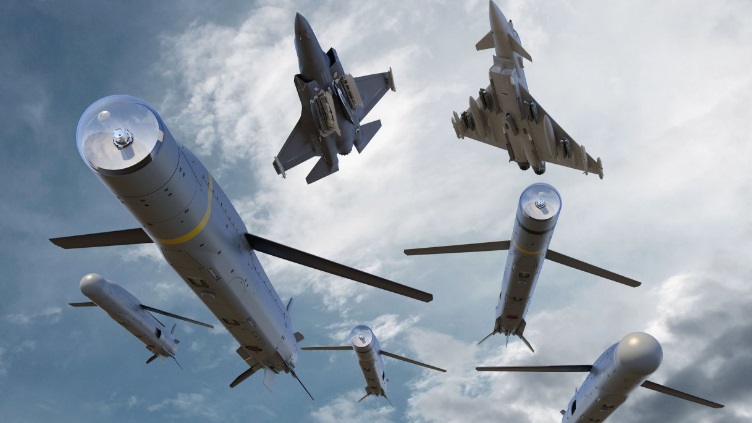
You could also achieve that with micro missiles:Now as the above article notes you'd essentially be launching 'mini-missiles' on some of the more sophisticated examples, (which some critics pointed out would be a 'better' idea anyway) with a simple and robust "launcher" that gives a more efficient initial speed boost than a simple rocket motor which has a lower detectability than a missile launch.
Combine this with the computerized weapons aiming system (F15-era Integrated Flight and Fire Control, https://www.ausairpower.net/AADR-IFFC-Sept-82.html) mentioned by Kcran567 (https://www.secretprojects.co.uk/th...ircraft-mounted-guns.31221/page-3#post-342959) and Low Observable (https://www.secretprojects.co.uk/th...ircraft-mounted-guns.31221/page-3#post-342964) and current data-sharing technology and it has a potential of being quite the potent weapon system. (And defensive as well. Imagine a flight of aircraft detecting one or more BVR missile launches, the Cannon Fighter aims and fires several 'beehive' rounds along the detected approach vectors where the shell internal seeker aligns and then detonates the warhead and each BVR runs into several large clouds of high closing speed flechettes, not to mention the launching aircraft getting some tossed their way too)
Last edited:
I think you better off with mini-missiles and bombs than a big gun
Why make the effort to carry a big caliber gun with high recoil when you can already carry 20-24 mini cruise missile
I'll repost a link to this post:
Which has the "Cannon Fighter" Introduction which explains the basics and the original timeline, (if you ignore the first date of 1997 which should read 1977
There's also the cost factor as the mini-(and not so mini) cruise missiles are going to cost more per round than even the more complex rocket or ramjet assisted guided shell. Your general cost comparison with an unpowered guided-glide bomb kit and an assisted, guided, boost-glide shell are closer since the cost scales with unit body and warhead size. And of course you're limited in that respect with the cannon shell size since larger than 155mm is unlikely. Still for the most part ranges are similar as it target destruction probability. Once you get past about 65 miles-to-target needs you pretty much want a bigger penetrating warhead anyway.
And again we MAY have these IF any of these actually go into production or actual operation which on a good number of these projects is HIGHLY dependent on them not costing as much as it looks like they are going to. Hence price is again a major factor
You could also achieve that with micro missiles
A2A? Right off the bat I'll admit there's little rear-aspect/chase capabilty for the concept, it's mostly a 'head-to-head' system. But even so note that while the SACM is supposed to be half the size of the AIM-120 AMRAAM, (illustration actuall shows it to be about a third) with the same capabiliietes (@50 mile active intercept range) its still larger and greatly more expensive than a similar 'shell' round with similar capabilities. Currently the paradigm (and culture) assumes more advanced guidance attached to "standard" munitions (gravity bombs and missiles) is the way to go but keep in mind that pretty much the SAME situation exists for artillary ammunition and therefore the 'advancment' paths are on-going and similar it is just not usually thinkable to consider the "other guys" options for your use. ("Usually" being the keyword since the Army and Navy more often than the Air Force actually DO consider and test USAF systems for their own use
Now again this doesn't have an AIM's ability to run-down a target but in the context of the original concept that's not something a Air-To-Ground attack aircraft is going to do much. One of the main arguments used by the Air Force for converting from A-10s to F-16s/F-35s is an armament configuration change, or simply carrying both ATG and AIM loads the aircraft can easily convert to Air Superiority on the same airframe. (As many will point out despite one of the Air Force's job's being to support the Army/Marines on the ground we, as a rule, aren't that keen on actually doing so. BUT we have the infamous "Key West Aggrement" that states we sure as heck are not going to let the ARMY do that job either
Back to A2A ideas, one of the things that we do today is plan to use BVR (Beyond Visual Range) AIM's to knock down as many enemy aircraft as we can before we get into the more intense Visual Range combat. Of course any enemy and especailly any near-peer or peer enemy is going to do the same but in general the better your ability to carry out the initial BVR assualt the better your odds of winning air superiority in a given air space. (One of the "key" points why the US has such a hard time in recent years with combat exercises with near-peer nations such as India is that those nations insist on disallowing the US BVR weapons or operations during those exercises. Since the US forces are more often than not numerically inferior that restriction limits our ability to engage effectivly. Which of course is why the adversaries inist on such restrictions
Where's this going? Well lets imagine a Cannon Fighter flying with the 'standard' strike and A2A package towards a known enemy target defended by air and ground defense assets. Quite obviously the air assests are going to try and intercept and engage the strike package (and/or dust it up with the A2A defense package) including setting up for the initial BVR strike and response. There are a couple of reasons to bring the Cannon Fighter, (really several but you know what I mean) along. Now current BVR ranges are somewhere between around 100 miles (Metor-type AIM's) and 50 miles (AMRAAM) with high probabiity "kill" ranges being around 30-40 miles and everybody pretty much knows this so will try and close in to YOUR "best" range while trying to remain outside the other guys.
Now also today the fewer that "light up" active tracking systems the better so in any group you have only a couple of aircraft that will have a 'search' radar going and none if you have any kind of AWACS support which will normally have far more 'range' than the system carried by the fighters. While this is an 'active' system it's not usually considered a 'threat' system because it is after all only a 'search' system not an attack system. So while the 'enemy' intercept group is moving towards your group, beyond a certain range they will not be activily or heavily manuvering until they "see" (or are warned) of a active threat system coming on-line. Now the Cannon Fighter is pretty much designed to be what amounts to a flying artillary battery and one thing that artillary is rather good at is firing on non-or-slow moving targets with projected ballistic shots. So, using the data from the AWACS and other sensors and its onboard fire control system the Cannon Fighter sets up and fires two round or AA rounds in a combined propulsive/ballistic arc and utilizing body and guidiance surface lifting aimed at a point where the enemy WILL be at around a bit over say 100 miles away. Now keep in mind they are not going to be evading or throwing counter-measures because there is first of all NO active targeting systems going and two because they are trying to get into range to launch THEIR BVRs and using only search and AWACS systems. No missile launches have been detected, there has been no active 'painting' as required to target missiles and in fact there is no indication of incoming danger. (An AWACS 'might' pick up the shells in flight but tracking artillary rounds takes specific computing code and isn't normally a default setting in an air combat situation. Though for bonus points we get to bring back the callout "Fox Four!" to the pilot's lexicon, https://en.wikipedia.org/wiki/Fox_(code_word)
The rounds themselves DO have active seekers but they would be programmed to wait until they were within only a few miles on the 'downward' part of the arc, (above the enemy and coming in at high speed was one of the reasons the Talos missile was so effective when attacking, pilots are trained to look for long range threats from near their own flight level or below not usually from above) so when they do there will be little time for the aircraft to manuever. Two AA rounds per 'target' (assuming 105mm rounds, 155 will be higher) means around 38,000 high speed flechettes with about a 200 meter, (about 215ft) radius high-probabilty "kill" zone. Going with the suggested 30 rounds per Cannon Fighter that's a very high probabilty of at least 15 (while they will be at 'combat' seperation intervals they will also be 'stacked' and 'staggered' and the flechette cloud will continue to expand as it goes on) enemy aircraft knocked out before you get into high BVR kill range. Plus another 15 for every other Cannon Fighter you decided to bring along for the ride. Of course the Cannon Fighters are now down to using whatever pylon mounted weapons they still have, (which if you were smart are BVR weapons you can shoot off when in range and then GTHOoD since they are NOT going to be closing to knife-fighting range) and then heading home to re-arm and re-fuel for the NEXT sortie.
Possible and plausible? Yes, it's pretty much enheirent with the capabilities of the Cannon Fighter, modern sensors and battle field information sharing technology. LIkely? Much harder to say since it's not intuative nor likely something those in charge of procurment or budget would normally think of or consider. (The original Cannon Fighter concept shows this is a historical thing after all)
Now going back to my little aside on CAS (Close Air Support) issues between the Army and Air Force the Army DID try and find a way to address the shortcoming also in the 1970s. Helicopter "gunships" had become a thing in Vietnam and the Army got the idea to try mounting a pair of light-weight, low-recoil howitzers on a CH-47 Chinook transport helicopter. (This being the 70s they only got the "low-recoil" part right the damn system massed almost 15,000lbs but to be honest part of that was 256lbs for structural reinforcments, 3,820lbs for 96 rounds and of the total "weapons kit" mass of 10,690lbs the two howitzers only massed 6,951lbs {3,475lbs each) with the rest being taken up by the mounting system and a VERY complex loading system. Oh and did I mention that the howitzers still retained everything needed to pop them off, slap the wheels and tow bar back into place and turn them back into field artillary? There was that too)
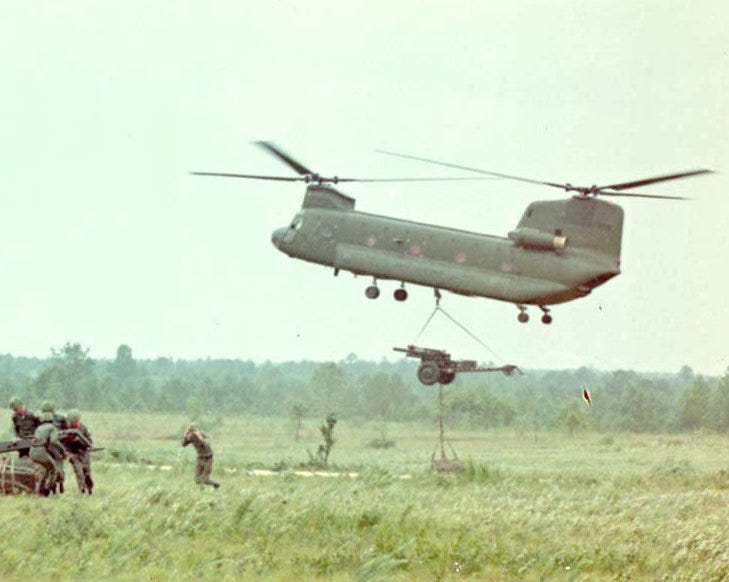
The Army’s Doomed Plan for a Howitzer-Toting Helicopter Gunship
1970s studies were the beginning of the end for the aerial artillery concept
 medium.com
medium.com
And once again you have two groups around similar time frames working on similar projects that never talked or cross-pollinated concepts because IF as the last link suggests the main issue was ignition of the firing charge on a timely and regular basis that was fixed but not in time to save the project, a broader base of interest would have probably saved it. Especailly when you consider what mounting the data sharing and fire control systems for something like the F-15 into such an aircraft and then possibly even setting aside the considerations of keeping the CH-47's "transport" capability and use of the howitzers off the vehicle. Add in guided projectiles and the Army suddenly has a VERY capable attack platform which would go a long way to addressing it's various CAS needs. Pretty much anything the Cannon Fighter could do the Cannon Helo could do with likely a lot more rounds as well. (Especially if they can 'fix' that loading system gahhh, it was a mess. Understandable somewhat as it had to go from inside the Helo, through a windown and into the autoload system into the howitzer and then eject into a net hanging under the Helo but still...)
Interesting weight breakdown on the Hawkeye here:
Hawkeye 105mm Mobile Weapon System (MWS)
Show a weight of about 1,750lbs for the basic "gun" and recoil system which is a lot better than 3,475lb for the XM204. A lot heavier than the recoilless rifle sytems though. Quite light for an artillary gun, comes really close to the Pack 75mm Howitzer, (1,429lbs all up) but also obviously would eat up the payload of an aircraft to carry. Still, assuming F-16/F-35 performance (and assuming you rebuild the airframe to carry the loading which something one needs to keep in mind when talking 'carrying' versus say 'munitions hard point' loads
Minus the 1,750lbs for the Hawkeye, tack on another 250lbs for a "mounting" system and bring it up to an even 2,000lbs that leaves 8,000lbs. I found this autoloader for the Striker Gun System, (https://meggittdefense.com/wp-content/uploads/2017/01/StrykerMGS.pdf) which gives a weight of 470lbs without shells but lists an 18 round capacity total. We'll call it 500lbs with an "open-ended" magazine at this point. So down to 7,500lbs. "Standard" projectile weight is around 40lbs with a given propellant charge weight of 33lbs and most listings show the total round weight at about 75lbs including "guidance and assist" weights so we'll go with the 75lbs per round. Lets say we carry 20 rounds so that's 1,500lbs which leaves 6,000lbs for other ordenance and we'll want at least two (2) wing hard points for fuel tanks and put the rest into two 1,000lbs hard points for AIM missiles (or mixed long/short range missiles) so that's the other 6,000lbs capacity, Note I didn't remove the actual internal gun that's mounted on the aircraft (20mm gatling) or the ammo.
So for around 4,000lbs we'd have a "Cannon Fighter" with 20 shots plus an internal 20mm gun and three 2,000lbs hard points for added muntions with up to eight (8) smaller munitions and up to four (4) AIM missiles. Not bad.
Now even if you double this, (for the CH47 "Gunship" concept) to 8,000lbs and add 13 rounds per gun (total of 23 shots per gun) so we have a near even 10,000lbs that's 5,000lbs lighter than the 1970s concept. Note the External Stores Support System (ESSS) on the UH-60 Blackhawk (https://www.military.com/equipment/uh-60a-l-black-hawk) can carry 5,000lbs each so they could carry two of these systems assuming you could keep the 'pod' design under 1000lbs.
All in all the concept still has some merit and utility even if you don't go with a dedicated airframe or service for that matter. Thanks for the discussion.
Feel free to keep going I'm having fun
Randy
jsport
what do you know about surfing Major? you're from-
- Joined
- 27 July 2011
- Messages
- 7,736
- Reaction score
- 5,755
Missiles used to make sense but as material science has made recoiless (RAVEN) and recoiless EMG (above AF patent) plus ultra light superhard materials render missiles to longer the right choice.
In the past, missiles constance thrust would always beat a gun however, that has changed w/a ram/scram rd especailly combine w/ railgun renders missiles silly toys. Missiles are more so toys when pitted against terminal defenses as the AHEAD gun tech able to defeat missiles all day. Much argument over that in previous posts not to be repeated here.
In the past, missiles constance thrust would always beat a gun however, that has changed w/a ram/scram rd especailly combine w/ railgun renders missiles silly toys. Missiles are more so toys when pitted against terminal defenses as the AHEAD gun tech able to defeat missiles all day. Much argument over that in previous posts not to be repeated here.
Last edited:
Oh yes and I found this while I was mucking about:
"Weapons System Concept for a Future Gunship" which suggests modifying the 105mm gun into a weapon capable of firing 120mm mortar ammunition including guided and assisted round with a muzzle velocity of around 1100fps and ranges out to almost 20 miles in a little over a minute. And that's before the suggestion of adding a bigger 'sustainer' rocket or actual lifting surfaces to the design which extends the ranges out beyond 40 miles or more. And the launch velocity (Mach 0.9) is enough to use a ramjet to get up to high supersonic (Mach 4-ish) speeds before burnout if you go that route. It's noted this also greatly reduces the recoil which if you START with low recoil system...
Randy
"Weapons System Concept for a Future Gunship" which suggests modifying the 105mm gun into a weapon capable of firing 120mm mortar ammunition including guided and assisted round with a muzzle velocity of around 1100fps and ranges out to almost 20 miles in a little over a minute. And that's before the suggestion of adding a bigger 'sustainer' rocket or actual lifting surfaces to the design which extends the ranges out beyond 40 miles or more. And the launch velocity (Mach 0.9) is enough to use a ramjet to get up to high supersonic (Mach 4-ish) speeds before burnout if you go that route. It's noted this also greatly reduces the recoil which if you START with low recoil system...
Randy
Missiles used to make sense but as material science has made recoiless (RAVEN) and recoiless EMG (above AF patent) plus ultra light superhard materials render missiles to longer the right choice.
In the past, missiles constance thrust would always beat a gun however, that has changed w/a ram/scram rd especailly combine w/ railgun renders missiles silly toys. Missiles are more so toys when pitted against terminal defenses as the AHEAD gun tech able to defeat missiles all day. Much argument over that in previous posts not to be repeated here.
As an ex-ammo troop I'll simply say missiles, like any other munition will invariably make "sense" for some missions and uses. The problem is that the definition of "missile" is evolving as is "projectile" since the lines are becoming so blurred and overlapped. Inevitable really as even the term 'free-fall munition' isn't used much due to guidance and assisted propulsion technology being so prevelent.
In the counter though one must keep in mind that as defensive sensor and tracking technology gets better it becomes that much easier to "kill" any incoming physical threat. As I noted above an AWACS radar, even using our own still mostly "top-of-the-line-1950s" technology (printed WIRING assembly cards folks, not even 'circut boards' but physical wire attachments though they've been replacing them as possble the system is designed around the damn things
Phalanx radar can not only track an incoming missile but each outgoing bullet, it's not stretch to assume that with the right software and program it can track any INCOMING bullets as well so at that point you simply need a weapon that can hit that incoming bullet and that's that. Once at that point your only option is to overload the defense system with cheap, 'dumb' direct fire weapons or avoid them with light-speed DEW's or maybe making 'stealth' bullets/projectiles/missiles but that will get very expensive very fast. (Or a SOF team and a satchel charge of course
The much vaunted and feared "hypersonic" missile/warhead is the most recent "answer" to this issue without developing phaser batteries, (and how do you use those for indirect fire anyway) but even so it greatly depends on its speed to allow it to reach the target before any electronic targeting and tracking system or weapon can destroy it and frankly that's not a race you can win in the long term. Hypersonic speed means lower tracking time but it also means a higher tracking signature which goes right back into increasing the tracking time of the incoming target.
Another reason to go "small" has been to reduce the radar and other tracking modes 'signature' of a weapon, To this I point to the fact that the same above AWACS could and did 'track' individuals by the return from things like their belt buckle or weapon at several hundred miles with, again, the right software. It wasn't accurate or easy but that was with early 90s software and at best late-1960s hardware for the most part and it's going on the mid-2000s with all the progress in computing power and hardware that implies. There is a very good reason why "lasers" are back in serious consideration again.
One point I'll make is that probably one thing everyone should take away from the Cannon Fighter concept is pretty simple and widely applicable: Anything hit (well short of a Main Battle Tank at least) with several hundred high speed steel darts is going to have a very bad day and the faster it is going when it is hit the worse it is especially when you combine reciprocal velocites. Aircraft, missile, artillary shell, even a nuclear warhead is not going to deal with the impact well at all. Which makes me remember that the Navy did a lot of work on the concept of a "rapid fire" 5 inch cannon during the 80s, (think 5 inch gatling gun) and with modern guidance and control coupled with radar and tracking computers it kinda makes me wonder how much the "ABM systems are EVIL" crowd would scream over how effective THAT would be
Just some more thoughts to ponder
Randy
jsport
what do you know about surfing Major? you're from-
- Joined
- 27 July 2011
- Messages
- 7,736
- Reaction score
- 5,755
bigger newer gunsDilandu said:I REALLY doubt that you could achieve a required penetration from the gun of tactical aircraft size... Something like "Spectre" gunboat, armed with heavy cannon, might do the trick.
Must also point out, that aircraft shelters are usually heavily protected by SAM's & AA guns, so the idea of strafing them with tactical aircraft does not look good.
I'm not sure that it's strafing in the conventional sense but you're probably right in that it's not
going to be for something that's been considered tactical aircraft size.
There's some semi-recent AFRL work on airborne railguns in transport aircraft which seems to
stem from McNab et al's AFOSR sponsored work on airborne railgun launched small sats.
Progress on Hypervelocity Railgun Research for Launch to Space

Progress on Hypervelocity Railgun Research for Launch to Space
The Universities of Texas, Minnesota, and New Orleans and Texas Tech University are undertaking research supported by the Air Force Office of Scientific Research on critical issues for launch to space from a railgun carried on an airborne platform. The University of Texas at Austin is studying...
Last edited:
jsport
what do you know about surfing Major? you're from-
- Joined
- 27 July 2011
- Messages
- 7,736
- Reaction score
- 5,755
If you are up against railguns you are gonna need railguns. Small UAS swarms will not overtake the AAA belts on unclassified imagery surrounding targets in Asia. The swarms would end up as skeet.
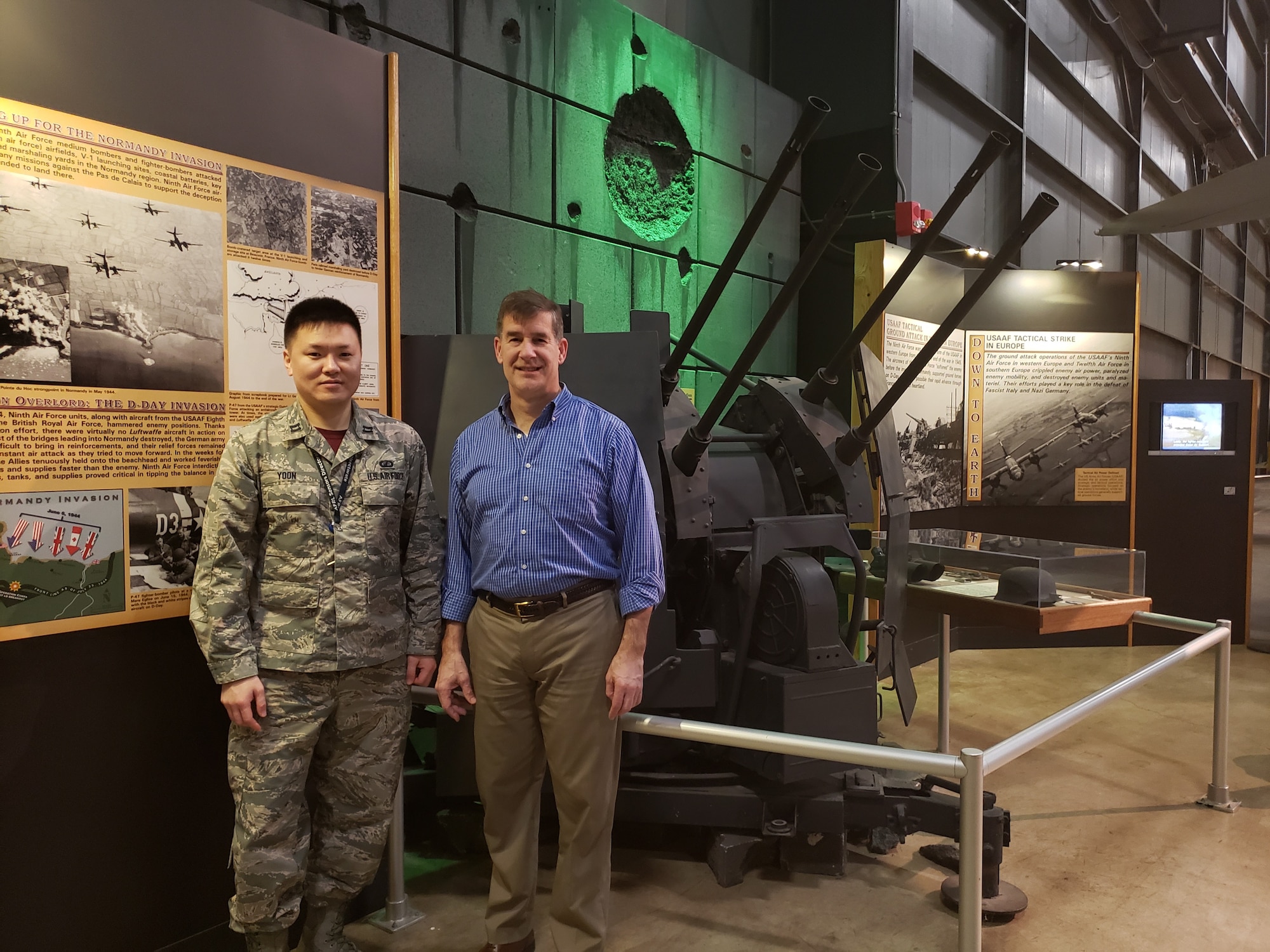
"WRIGHT-PATTERSON AIR FORCE BASE, Ohio – The Air Force Research Laboratory Sensors Directorate and the National Museum of the United States Air Force Collection Management Division are teaming up to help address an Air Force need to automatically detect numerous highly mobile ground threats such as anti-aircraft guns, also known as AAA.
In conventional warfare, AAA weapons are used to defend high asset value targets on the ground such as Surface to Air Missile sites, headquarters, weapons storage sites, bridges, power grids, and other vulnerable strategic targets.
“If you can detect an AAA gun, you know there’s a high probability there’s a high value military target close by,” said David Sobota, with the Sensors Effects and Analysis Branch at AFRL’s Sensors Directorate. Sobota is collaborating with Capt. Yongjun Yoon, who is an RF sensing engineer from the RF Technology Branch at AFRL's Sensors Directorate. "Mitigating the risks of the AAA guns' lethal attacks will increase flexibility of airborne and air assault operations, which significantly benefits our missions and warfighters," said Yoon.
Automatically detecting targets is difficult when clutter such as trees, bushes, or roads are close to the target, and decoys make the problem even more difficult, according to Sobota. “The problem has been worked on for 30-plus years and we’re currently exploring Machine Learning and Artificial Intelligence techniques for target detection.”
Collecting realistic signature data is everything when it comes to radar research.
“What you ideally want to do is collect real-world data and then try to come up with techniques to detect these reflectivity signatures in the real-world,” said Sobota. “Using real anti-aircraft guns from the Air Force Museum will help us come up with more reliable detection techniques more quickly.”
The museum’s support, by offering five AAA guns, is a gold mine for this project, Sobota said.
The guns, which are part of the national historical property collection at the National Museum of the U.S. Air Force, are preserved by the museum’s Collection Management Division for research and possible use in future exhibits.
“We are pleased that these artifacts can be utilized for this research project,” said National Museum of the U.S. Air Force Collection Management Division Chief Roberta Carothers. “The museum strives to support all operational requests similar to AFRL’s data request to help the warfighter reduce AAA ground threats.”
Sobota just initiated three Small Business Innovation Research contracts, all currently in Phase I, asking companies to do some modeling and simulation. Each is $150,000 for nine months. Some will qualify for Phase IIs, which are $750,000 for two years.
Sobota, Yoon, and their team plan to build three mock-ups of common AAA guns so they can be taken to test ranges, so they plan to take radar reflectivity measurements of the museum’s guns using a portable X band radar. This data will help to determine dominant reflectors needed in their mock-ups, which will be built by their fabrication shop team.
“We know the multiple barrels alone from the AAA gun are very visible to a radar, but the barrels are surrounded by other structures such as shell feeders. All these structures reflect radar energy. The AF Museum guns will help us build a more realistic mock-up. We will design the mockup so it looks like a real AAA gun to the radar, but it has to be much lighter and reconfigurable,” Sobota said.
Sobota, citing a Government Accountability Office report, said that during the Vietnam War, AAA weapons were responsible for over 50 percent of the aircraft shot down. This has been true for most modern conflicts. In the past, AAA were manually loaded, hand cranked, with crews of 6-10. “They just had mechanical cross hairs to guide their firing,” he said.
“The modern AAA has electro-optical/infrared sensors and radar that lets the operator know how much to lead the target. Radar gives them access to range and velocity information and all-weather capability. Modern systems are totally automated and usually have a crew of just two. It has electric servos for fast slewing, auto-loaders, and has a much faster firing rate,” Sobota said.
The latest AAA guns are designed specifically to shoot down swarming UAVs, according to Sobota.
“If the Allies could shoot down Nazi buzz bombs (similar to modern UAVs) with an 82 percent success rate in WWII, just imagine how effective these modern guns will be,” he said.
Another aspect that makes AAA research more applicable is the Air Force’s vision of using swarming UAVs, Sobota said, adding, “To recognize targets with a UAV, you have to fly fairly low level just to get the resolution needed to automatically detect these targets. You can’t do this at high altitude – radars just aren’t that good. Radar technology is key to all-weather capability. Other sensors do not have the range, especially in bad weather. You can’t plan your tactics around good weather.”
Another part of the research is determining whether we can backtrack the artillery shells in flight and detect the plasma discharge when firing, Sobota said. “When it fires, the gun shoots out plasma which has a significant radar cross-section and Doppler signature.”
“If we can’t detect the anti-aircraft artillery gun at a safe stand-off distance, you’d like to at least detect the AAA shell/projectiles in flight. In the Air Force’s swarming autonomous UAV vision, you will have numerous expendable or attritable aircraft flying over denied territory. As the adversary is firing at your UAVs, you can detect which AAA are firing, backtrack their projectiles, and either warn the other UAVs to stay away, cue other UAVs to find targets nearby, or destroy the AAA gun itself.”
Sobota said he has already started talking to the Army Research Lab in order to get help collecting data of Doppler gun recoil and direct plasma measurements of firing guns.
“Many countries are working on Mach 6+, 200+ mile railguns, and extended range artillery. More powerful propellants, rocket-assisted, and smart shells are already here,” he said.
Some legacy AAA guns are lethal to 35,000 feet and will become more lethal as tracking improves, said Sobota. The future is extended range artillery with smart shells. Also, technology such as railguns, plasma powered, and electro-thermal chemical guns are making rapid progress.
It’s unknown at this point which technology will win out. Currently, the U.S. Navy and other countries are investing heavily in railguns and they are already testing prototypes, Sobota said.
Today, the Air Force is going up against denied environments with near peer forces. These adversaries have sophisticated air defenses with AAA and missiles. Tomorrow it will be lasers, railguns, extended range artillery, AAA, and missiles. These systems will be more automated, more lethal, with much quicker reaction times, said Sobota."
AFRL research targets lethal AAA weaponry
WRIGHT-PATTERSON AIR FORCE BASE, Ohio – The Air Force Research Laboratory Sensors Directorate and the National Museum of the United States Air Force Collection Management Division are teaming up to
www.wpafb.af.mil
"WRIGHT-PATTERSON AIR FORCE BASE, Ohio – The Air Force Research Laboratory Sensors Directorate and the National Museum of the United States Air Force Collection Management Division are teaming up to help address an Air Force need to automatically detect numerous highly mobile ground threats such as anti-aircraft guns, also known as AAA.
In conventional warfare, AAA weapons are used to defend high asset value targets on the ground such as Surface to Air Missile sites, headquarters, weapons storage sites, bridges, power grids, and other vulnerable strategic targets.
“If you can detect an AAA gun, you know there’s a high probability there’s a high value military target close by,” said David Sobota, with the Sensors Effects and Analysis Branch at AFRL’s Sensors Directorate. Sobota is collaborating with Capt. Yongjun Yoon, who is an RF sensing engineer from the RF Technology Branch at AFRL's Sensors Directorate. "Mitigating the risks of the AAA guns' lethal attacks will increase flexibility of airborne and air assault operations, which significantly benefits our missions and warfighters," said Yoon.
Automatically detecting targets is difficult when clutter such as trees, bushes, or roads are close to the target, and decoys make the problem even more difficult, according to Sobota. “The problem has been worked on for 30-plus years and we’re currently exploring Machine Learning and Artificial Intelligence techniques for target detection.”
Collecting realistic signature data is everything when it comes to radar research.
“What you ideally want to do is collect real-world data and then try to come up with techniques to detect these reflectivity signatures in the real-world,” said Sobota. “Using real anti-aircraft guns from the Air Force Museum will help us come up with more reliable detection techniques more quickly.”
The museum’s support, by offering five AAA guns, is a gold mine for this project, Sobota said.
The guns, which are part of the national historical property collection at the National Museum of the U.S. Air Force, are preserved by the museum’s Collection Management Division for research and possible use in future exhibits.
“We are pleased that these artifacts can be utilized for this research project,” said National Museum of the U.S. Air Force Collection Management Division Chief Roberta Carothers. “The museum strives to support all operational requests similar to AFRL’s data request to help the warfighter reduce AAA ground threats.”
Sobota just initiated three Small Business Innovation Research contracts, all currently in Phase I, asking companies to do some modeling and simulation. Each is $150,000 for nine months. Some will qualify for Phase IIs, which are $750,000 for two years.
Sobota, Yoon, and their team plan to build three mock-ups of common AAA guns so they can be taken to test ranges, so they plan to take radar reflectivity measurements of the museum’s guns using a portable X band radar. This data will help to determine dominant reflectors needed in their mock-ups, which will be built by their fabrication shop team.
“We know the multiple barrels alone from the AAA gun are very visible to a radar, but the barrels are surrounded by other structures such as shell feeders. All these structures reflect radar energy. The AF Museum guns will help us build a more realistic mock-up. We will design the mockup so it looks like a real AAA gun to the radar, but it has to be much lighter and reconfigurable,” Sobota said.
Sobota, citing a Government Accountability Office report, said that during the Vietnam War, AAA weapons were responsible for over 50 percent of the aircraft shot down. This has been true for most modern conflicts. In the past, AAA were manually loaded, hand cranked, with crews of 6-10. “They just had mechanical cross hairs to guide their firing,” he said.
“The modern AAA has electro-optical/infrared sensors and radar that lets the operator know how much to lead the target. Radar gives them access to range and velocity information and all-weather capability. Modern systems are totally automated and usually have a crew of just two. It has electric servos for fast slewing, auto-loaders, and has a much faster firing rate,” Sobota said.
The latest AAA guns are designed specifically to shoot down swarming UAVs, according to Sobota.
“If the Allies could shoot down Nazi buzz bombs (similar to modern UAVs) with an 82 percent success rate in WWII, just imagine how effective these modern guns will be,” he said.
Another aspect that makes AAA research more applicable is the Air Force’s vision of using swarming UAVs, Sobota said, adding, “To recognize targets with a UAV, you have to fly fairly low level just to get the resolution needed to automatically detect these targets. You can’t do this at high altitude – radars just aren’t that good. Radar technology is key to all-weather capability. Other sensors do not have the range, especially in bad weather. You can’t plan your tactics around good weather.”
Another part of the research is determining whether we can backtrack the artillery shells in flight and detect the plasma discharge when firing, Sobota said. “When it fires, the gun shoots out plasma which has a significant radar cross-section and Doppler signature.”
“If we can’t detect the anti-aircraft artillery gun at a safe stand-off distance, you’d like to at least detect the AAA shell/projectiles in flight. In the Air Force’s swarming autonomous UAV vision, you will have numerous expendable or attritable aircraft flying over denied territory. As the adversary is firing at your UAVs, you can detect which AAA are firing, backtrack their projectiles, and either warn the other UAVs to stay away, cue other UAVs to find targets nearby, or destroy the AAA gun itself.”
Sobota said he has already started talking to the Army Research Lab in order to get help collecting data of Doppler gun recoil and direct plasma measurements of firing guns.
“Many countries are working on Mach 6+, 200+ mile railguns, and extended range artillery. More powerful propellants, rocket-assisted, and smart shells are already here,” he said.
Some legacy AAA guns are lethal to 35,000 feet and will become more lethal as tracking improves, said Sobota. The future is extended range artillery with smart shells. Also, technology such as railguns, plasma powered, and electro-thermal chemical guns are making rapid progress.
It’s unknown at this point which technology will win out. Currently, the U.S. Navy and other countries are investing heavily in railguns and they are already testing prototypes, Sobota said.
Today, the Air Force is going up against denied environments with near peer forces. These adversaries have sophisticated air defenses with AAA and missiles. Tomorrow it will be lasers, railguns, extended range artillery, AAA, and missiles. These systems will be more automated, more lethal, with much quicker reaction times, said Sobota."
jsport
what do you know about surfing Major? you're from-
- Joined
- 27 July 2011
- Messages
- 7,736
- Reaction score
- 5,755
I think there are 2 factors that this comparison overlooked:
Which has the "Cannon Fighter" Introduction which explains the basics and the original timeline, (if you ignore the first date of 1997 which should read 1977) at which time the AGM-65 Mavrick was the "new" wonder missile. Note the 'cannon' is type of recoiless or low-recoil launcher and keep in mind this could be 'externally' mounted and used without enlarging the aircraft RCS like external bombs, missiles and pylons would. Low-recoil was a thing the Army constantly experimented with in the past, (https://apps.dtic.mil/dtic/tr/fulltext/u2/763204.pdf, https://www.thedrive.com/the-war-zo...and-155mm-towed-howitzers-with-one-new-cannon, https://www.flickr.com/photos/cmwebbjr/sets/72157634012673868/) and are doing so again, (https://www.thedrive.com/the-war-zo...er-small-enough-to-fit-on-the-back-of-a-truck, http://www.mandusgroup.com/news.php?topic=details&ni=15, https://www.secretprojects.co.uk/threads/brutus-155mm-truck-mounted-howitzer.31037/) in both 105mm and 155mm sizes.
1- Cannon shell need propelling charge, so to fire each shell, you need to carry not only the round but also the propellant, so' the space you save isn't really as efficient as shown in the photo.
2- How do you re load after each round fired? An aircraft with missiles and bombs can drop their bombs or launch their missiles almost simultaneously whereas for a cannon fighter, you will need very long time to reload, and unlike the cannon in these articles, your cannon need some sort of autoloading systems. Auto loading are easy to jam and might not work under high G condition and they could be very big too.
I think the major contributor of cost is the sensor. If we put radar seeker and datalink on an artilery round then it will be very expensive as wellThere's also the cost factor as the mini-(and not so mini) cruise missiles are going to cost more per round than even the more complex rocket or ramjet assisted guided shell. Your general cost comparison with an unpowered guided-glide bomb kit and an assisted, guided, boost-glide shell are closer since the cost scales with unit body and warhead size. And of course you're limited in that respect with the cannon shell size since larger than 155mm is unlikely. Still for the most part ranges are similar as it target destruction probability. Once you get past about 65 miles-to-target needs you pretty much want a bigger penetrating warhead anyway.
And again we MAY have these IF any of these actually go into production or actual operation which on a good number of these projects is HIGHLY dependent on them not costing as much as it looks like they are going to. Hence price is again a major factor
1- Air to air missiles range is very dependent of target's altitude, target's speed, launch altitude and launch speed.There are a couple of reasons to bring the Cannon Fighter, (really several but you know what I mean) along. Now current BVR ranges are somewhere between around 100 miles (Metor-type AIM's) and 50 miles (AMRAAM) with high probabiity "kill" ranges being around 30-40 miles and everybody pretty much knows this so will try and close in to YOUR "best" range while trying to remain outside the other guys.
Now also today the fewer that "light up" active tracking systems the better so in any group you have only a couple of aircraft that will have a 'search' radar going and none if you have any kind of AWACS support which will normally have far more 'range' than the system carried by the fighters. While this is an 'active' system it's not usually considered a 'threat' system because it is after all only a 'search' system not an attack system. So while the 'enemy' intercept group is moving towards your group, beyond a certain range they will not be activily or heavily manuvering until they "see" (or are warned) of a active threat system coming on-line. Now the Cannon Fighter is pretty much designed to be what amounts to a flying artillary battery and one thing that artillary is rather good at is firing on non-or-slow moving targets with projected ballistic shots. So, using the data from the AWACS and other sensors and its onboard fire control system the Cannon Fighter sets up and fires two round or AA rounds in a combined propulsive/ballistic arc and utilizing body and guidiance surface lifting aimed at a point where the enemy WILL be at around a bit over say 100 miles away. Now keep in mind they are not going to be evading or throwing counter-measures because there is first of all NO active targeting systems going and two because they are trying to get into range to launch THEIR BVRs and using only search and AWACS systems. No missile launches have been detected, there has been no active 'painting' as required to target missiles and in fact there is no indication of incoming danger. (An AWACS 'might' pick up the shells in flight but tracking artillary rounds takes specific computing code and isn't normally a default setting in an air combat situation. Though for bonus points we get to bring back the callout "Fox Four!" to the pilot's lexicon, https://en.wikipedia.org/wiki/Fox_(code_word))
The rounds themselves DO have active seekers but they would be programmed to wait until they were within only a few miles on the 'downward' part of the arc, (above the enemy and coming in at high speed was one of the reasons the Talos missile was so effective when attacking, pilots are trained to look for long range threats from near their own flight level or below not usually from above) so when they do there will be little time for the aircraft to manuever. Two AA rounds per 'target' (assuming 105mm rounds, 155 will be higher) means around 38,000 high speed flechettes with about a 200 meter, (about 215ft) radius high-probabilty "kill" zone. Going with the suggested 30 rounds per Cannon Fighter that's a very high probabilty of at least 15 (while they will be at 'combat' seperation intervals they will also be 'stacked' and 'staggered' and the flechette cloud will continue to expand as it goes on) enemy aircraft knocked out before you get into high BVR kill range. Plus another 15 for every other Cannon Fighter you decided to bring along for the ride. Of course the Cannon Fighters are now down to using whatever pylon mounted weapons they still have, (which if you were smart are BVR weapons you can shoot off when in range and then GTHOoD since they are NOT going to be closing to knife-fighting range) and then heading home to re-arm and re-fuel for the NEXT sortie.
Possible and plausible? Yes, it's pretty much enheirent with the capabilities of the Cannon Fighter, modern sensors and battle field information sharing technology. LIkely? Much harder to say since it's not intuative nor likely something those in charge of procurment or budget would normally think of or consider. (The original Cannon Fighter concept shows this is a historical thing after all)
For example for AIM-120D, launched against Mig-31, we are looking at this kind of engagement distance
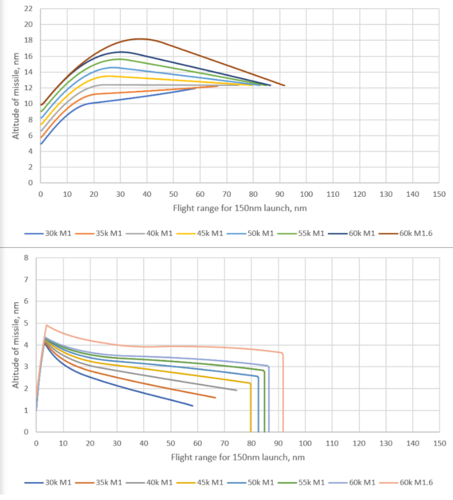
For Meteor launched against Mig-31 type target, we are looking at this kind of engagement distance
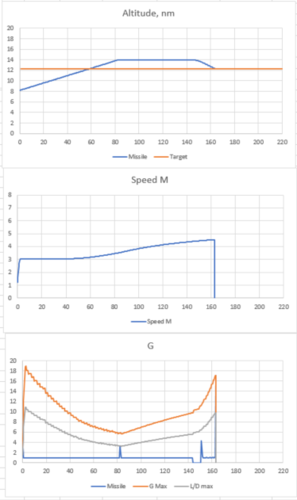
Even the legacy AIM-120B has huge range when launched from high altitude
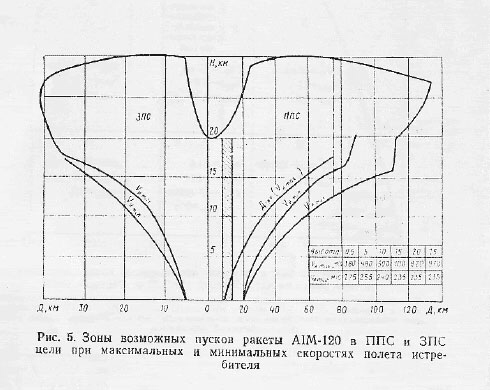
I don't think 155mm cannon shell can out range air to air missiles
2- Modern air to air missiles also follow a near ballistic arc very similar to artillery because coasting in thin air helps them keep their speed for longer period of time, and they are also programmed to aim at a point where the enemy will be at and their radar seeker also only activated at terminal phase when they diving down , so artillery shell will be detected just like any normal air to air missiles by radar, no special code required to track them. Artillery shell cant hide from IR system such as DAS either.
3-To lobs artillery shell to where the enemy fighter will be at, you need to know the speed, direction, distance, altitude of enemy fighter. Coincidentally, those are the same datas you need for missile attack. In other words, artillery attack isn't more stealthy than missile attack because you need the same kind of radar painting, and both of them can be done with third party targeting data.
4-guided artillery shell have smaller lifting surface compare to air to air missile (notably Meteor, Mica, R-77) and artillery shells have far worse L/D ratio (because they are shorter and fatter than misiles), so guided artillery shell can't turn as hard as missiles and any maneuver they made they will lose their energy quicker than air to air missile, so artillery shell will have much shorter range than air to air missile versus a maneuver target.
5- Air to air missiles can be ripled launch to deal with multiple target or increase the PK of each attack, a big cannon will have long delay between each shot.
6- modern air to air missiles have high off bore-sight targeting ability, so they are far better than cannon within visual range and they allow for multiple target attack on a single pass without pointing your nose at individual target in sequences
Last edited:
Missile allows aircraft to punch far above their weight. A small tactical fighter can carry missile that fly thounsand kilometers undetected or fly thousand kilometers at hypersonic speed. No cannon system that is small enough to be carried by tactical fighter can give you that ability.Missiles used to make sense but as material science has made recoiless (RAVEN) and recoiless EMG (above AF patent) plus ultra light superhard materials render missiles to longer the right choice.
In the past, missiles constance thrust would always beat a gun however, that has changed w/a ram/scram rd especailly combine w/ railgun renders missiles silly toys. Missiles are more so toys when pitted against terminal defenses as the AHEAD gun tech able to defeat missiles all day. Much argument over that in previous posts not to be repeated here.
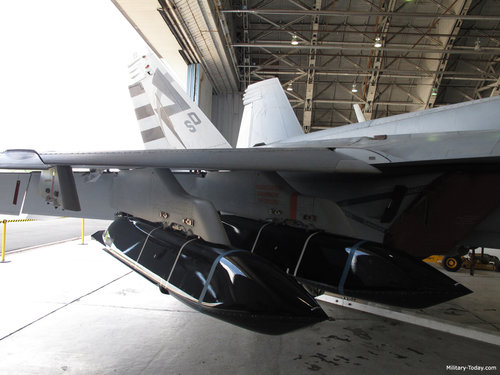
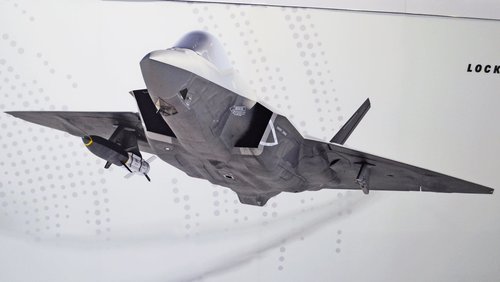
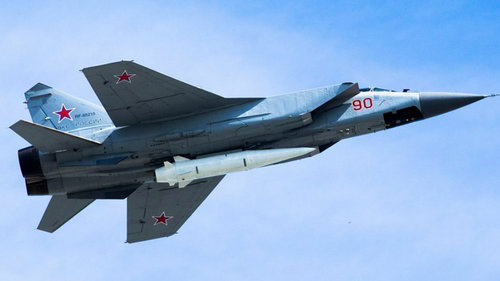
That C-5 will make beautiful explosion when it got hit by R-37, PL-XX, METEOR, LREW , AIM-260Some very good lob shots for Air Superiority as mentioned above beside the mini-sat launching.
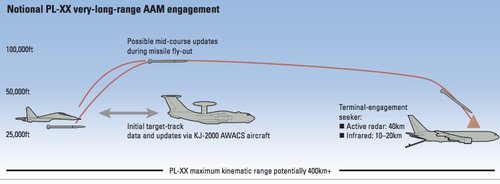
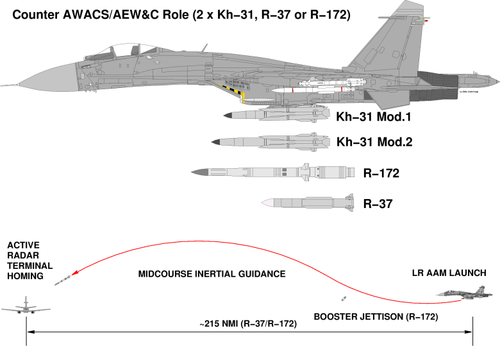
Last edited:
I think there are 2 factors that this comparison overlooked:
1- Cannon shell need propelling charge, so to fire each shell, you need to carry not only the round but also the propellant, so' the space you save isn't really as efficient as shown in the photo.
The quoted round were for both projectile and propellant load for the cited cannon. Which was why I used that example. That's why the Cannon Fighter could carry and launch more 'rounds' per sortie than the A-10 at the time. Missiles have become smaller but that also relates to the artillary rounds.
2- How do you re load after each round fired? An aircraft with missiles and bombs can drop their bombs or launch their missiles almost simultaneously whereas for a cannon fighter, you will need very long time to reload, and unlike the cannon in these articles, your cannon need some sort of autoloading systems. Auto loading are easy to jam and might not work under high G condition and they could be very big too.
Autoloader and magazine were included in the figures. The autoloader and magazine system are from the Stryker Gun System which is rated at being able to load a round with 7+/4- G's which is adequate for the tasking assigned.
I think the major contributor of cost is the sensor. If we put radar seeker and datalink on an artilery round then it will be very expensive as well
More expensive than a 'dumb' shell but they are pretty standard now and cost is about equal in comparision even though the artillary shell version is better hardened
1- Air to air missiles range is very dependent of target's altitude, target's speed, launch altitude and launch speed.
For example for AIM-120D, launched against Mig-31, we are looking at this kind of engagement distance
For Meteor launched against Mig-31 type target, we are looking at this kind of engagement distance
Even the legacy AIM-120B has huge range when launched from high altitude
I don't think 155mm cannon shell can out range air to air missiles
Actually they could from similar launched altitudes as most missiles don't generate a huge amount of lift even at speed. Which is why long range air-to-surface missiles use specially shaped bodies and lifting surfaces to increase their range. Most AIM's don't because manuever is vastly more important than range to hit target.
2- Modern air to air missiles also follow a near ballistic arc very similar to artillery because coasting in thin air helps them keep their speed for longer period of time, and they are also programmed to aim at a point where the enemy will be at and their radar seeker also only activated at terminal phase when they diving down , so artillery shell will be detected just like any normal air to air missiles by radar, no special code required to track them. Artillery shell cant hide from IR system such as DAS either.
That's new since ballistic coasting normally caused a self-destruct in older missiles as without power they couldn't track or intercept a moving/evading target. The fact that the newer long range missiles are ballistic during intercept is interesting too so they wouldn't be much different than the artillary shells.
3-To lobs artillery shell to where the enemy fighter will be at, you need to know the speed, direction, distance, altitude of enemy fighter. Coincidentally, those are the same datas you need for missile attack. In other words, artillery attack isn't more stealthy than missile attack because you need the same kind of radar painting, and both of them can be done with third party targeting data.
That's actually arguable since the missile has a longer and more prominent 'track' due to the powered flight segment. Artillary auxilary propulsion tends to have a shorter propulsion segment unless it's like a ramjet powered system at which point the higher speed to target becomes a large factor which is why ramjet missiles tend to have a higher percentage to kill than standard rocket propulsion systems. (Meteor for example)
4-guided artillery shell have smaller lifting surface compare to air to air missile (notably Meteor, Mica, R-77) and artillery shells have far worse L/D ratio (because they are shorter and fatter than misiles), so guided artillery shell can't turn as hard as missiles and any maneuver they made they will lose their energy quicker than air to air missile, so artillery shell will have much shorter range than air to air missile versus a maneuver target.
Artillary shells can have significant body lift as well and they can turn just about as hard as an AIM missile can. It greatly depends on the fire mission and design, In addition they don't have to get as close to the target as an AIM to generate a high kill probabilty as shown in the diagrams which gives them a higher 'off-bore' kill zone.
5- Air to air missiles can be ripled launch to deal with multiple target or increase the PK of each attack, a big cannon will have long delay between each shot.
About 10 seconds between shots but this can be reduced with work. Some of the autoloading RR's could geneate a shot every second it depends on the system and how you put it together.
6- modern air to air missiles have high off bore-sight targeting ability, so they are far better than cannon within visual range and they allow for multiple target attack on a single pass without pointing your nose at individual target in sequences
That was part of the original Cannon Fighter set up though it did have to 'point' at each target it did so very rapidly while the pilot flew the aircraft through the mission profile. And keep in mind there is no 'pass' as this isn't meant to be an air superiority fighter but a general ground support aircraft with some anti-air capability.
I'm not saying the Cannon Fighter is a direct replacment for a general airframe just that is does have some possible advantages and options as compared to such an airframe.
Randy
jsport
what do you know about surfing Major? you're from-
- Joined
- 27 July 2011
- Messages
- 7,736
- Reaction score
- 5,755
A cannon fighter can well carry missiles as well. As stated numerous times.Missile allows aircraft to punch far above their weight. A small tactical fighter can carry missile that fly thounsand kilometers undetected or fly thousand kilometers at hypersonic speed. No cannon system that is small enough to be carried by tactical fighter can give you that ability.Missiles used to make sense but as material science has made recoiless (RAVEN) and recoiless EMG (above AF patent) plus ultra light superhard materials render missiles to longer the right choice.
In the past, missiles constance thrust would always beat a gun however, that has changed w/a ram/scram rd especailly combine w/ railgun renders missiles silly toys. Missiles are more so toys when pitted against terminal defenses as the AHEAD gun tech able to defeat missiles all day. Much argument over that in previous posts not to be repeated here.
View attachment 619374
View attachment 619375
View attachment 619376
That C-5 will make beautiful explosion when it got hit by R-37, PL-XX, METEOR, LREW , AIM-260Some very good lob shots for Air Superiority as mentioned above beside the mini-sat launching.
View attachment 619372
View attachment 619373
AHEAD AAA ammo terminates missiles in terminal phase, not sure how many times this has been repeated previously.
A cannon need not weight much and recoiless technology for essentially a missile firing gun will always beat a missile alone. Especially a recoilless EMRG (AF patent) potentially combined w/ missile munition also previous stated.
Additionally, an hybrid EM/RLPG utilizing Next Gen energetics inside the barrel and inside missile/rd is quite doable gven the research already accomplished w/ D2 rd during the SDI program.
As far sensors and control surfaces differences are nominal between a guide rd and a missile. One simply has to pay attention to technology. Mini missiles down to 25mm to shoot down MANPADS ets. are already along.
A C-5 or 747 or C-17 is only a stepping stone to something tactical, likewise sensors would sense muliple missiles from long range for elimination by hypersonic clouds of flechetes traveling long distances just destroyin the missile and fighter in same shot. Cued by sat planes aircraft guns w/ these ranges could pop planes right off the runway. Dogfight, more like a fly swat.
The RPM of for pure EMRG coild be extremely fast but why, when one has the range such a gun would be fine w/ just one a second.
Last edited:
From the photo, it seems that only the shell is included and not the propellant?The quoted round were for both projectile and propellant load for the cited cannon. Which was why I used that example. That's why the Cannon Fighter could carry and launch more 'rounds' per sortie than the A-10 at the time. Missiles have become smaller but that also relates to the artillary rounds.
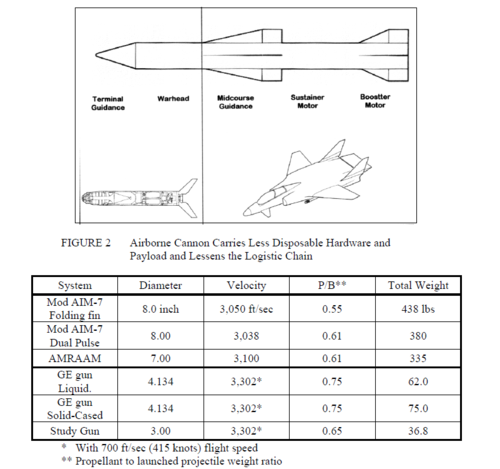
I haven't heard of that, can you cite a source?Autoloader and magazine were included in the figures. The autoloader and magazine system are from the Stryker Gun System which is rated at being able to load a round with 7+/4- G's which is adequate for the tasking assigned.
I mean the major contributor of a round or missile cost are sensor, so smaller shell aren't necessary cheaper.More expensive than a 'dumb' shell but they are pretty standard now and cost is about equal in comparision even though the artillary shell version is better hardened
Secondly, an artillery shell sensor must be better hardener than missile sensor because it must be able to withstand high acceleration.
Moreover because the artillery shell has smaller diameter than the missile (because putting very big gun on fighter seem implausible), so their sensor whether it is radar or IR sensor will have smaller aperture size => guided artillery shell's sensor will be shorter range and less resistant to jamming. And, missiles are bigger than 105 mm shell so they can carry bigger battery, bigger battery mean their sensor can operate longer or at higher out put.
Actually they could from similar launched altitudes as most missiles don't generate a huge amount of lift even at speed. Which is why long range air-to-surface missiles use specially shaped bodies and lifting surfaces to increase their range. Most AIM's don't because manuever is vastly more important than range to hit target.
Firstly, bigger wing will improve missile maneuverability because they are able to generate more lift, but bigger wing will reduce their range due to drag. So air to air missile often have smaller wing because they don't have a lot of energy to waste to drag like SAM not because they need more maneuvers. Nevertheless missiles still have better L/D ratio than artillery shell because they are longer than they are wide.
Secondly, a shell fired by cannon system reaches maximum speed at the barrel end once it no longer propelled by the propellant then it will decelerate due to drag
a missile reaches maximum speed once its rocket motor burn out, then it will decelerate due to drag
With similar maximum velocity, shells will start the deceleration phase sooner than missiles, because it will start the deceleration phase right at the barrel end whereas missiles start the deceleration phase a dozen kilometers forwards once motors run out. In addition, because a shell (that can be carried by fighter) will be lighter than a missile (that can be carried by fighter), they will decelerate quicker because they have less momentum. Furthermore, because shell reaches maximum speed at the barrel end, they already start deceleration phase in a thick atmosphere whereas AIM-120 take 7-8 seconds until it reaches maximum velocity when it already climbs to the higher altitude where air is thinner. In other words, let say Cannon fighter and missile fighter fly at 40.000 feet, their missiles and 105 mm shell both have Mach 5 maximum velocity, the artillery start deceleration at 40.000 ft whereas the missiles start the deceleration only once it reaches 50.000ft or higher. To sum up, missiles will have better terminal speed.
Thirdly, missiles which designed to have high end-game capability often have very remarkable lifting surface area by mid body wing or inlets
Meteor inlet form very good lifting body

RVV-BD can generate large amount of lift of its mid body wing

Peregrine can generate a lot of lift with mid body strakes
Mica is another one with great lifting area

AIM-120D motors only burn for 7-8 seconds, at long range it won't matter.That's actually arguable since the missile has a longer and more prominent 'track' due to the powered flight segment. Artillary auxilary propulsion tends to have a shorter propulsion segment unless it's like a ramjet powered system at which point the higher speed to target becomes a large factor which is why ramjet missiles tend to have a higher percentage to kill than standard rocket propulsion systems. (Meteor for example)
Meteor's motors can burn for several minutes so it is easier to detect by IR system than artillery shell and rocket motor missiles. However, Meteor cruising and end game speed are more than enough to counter that.
I don't think they can. No artillery shell has TVC so obviously they can't compete with WVR missiles like AIM-9X or IRIS-T , but also no artillery shell has large lifting surface area so they can't compete with Meteor, RVV-BD, Mica, Peregrine or R-77..etcArtillary shells can have significant body lift as well and they can turn just about as hard as an AIM missile can. It greatly depends on the fire mission and design
This is questionable, what stops anyone from putting flechette on a missile?In addition they don't have to get as close to the target as an AIM to generate a high kill probabilty as shown in the diagrams which gives them a higher 'off-bore' kill zone.
I have great skepticism that a 105 mm cannon can be reloaded every second. At 1 shot every 10 second, it has much less saturation effect compare to missileAbout 10 seconds between shots but this can be reduced with work. Some of the autoloading RR's could geneate a shot every second it depends on the system and how you put it together.
This is what I mean with "pass". Using LOAL weapons you can attack multiple target in a single pass.That was part of the original Cannon Fighter set up though it did have to 'point' at each target it did so very rapidly while the pilot flew the aircraft through the mission profile. And keep in mind there is no 'pass' as this isn't meant to be an air superiority fighter but a general ground support aircraft with some anti-air capability.
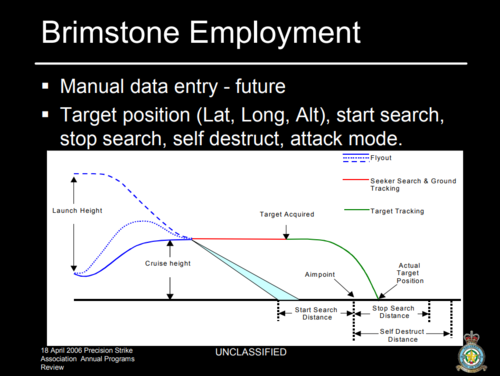
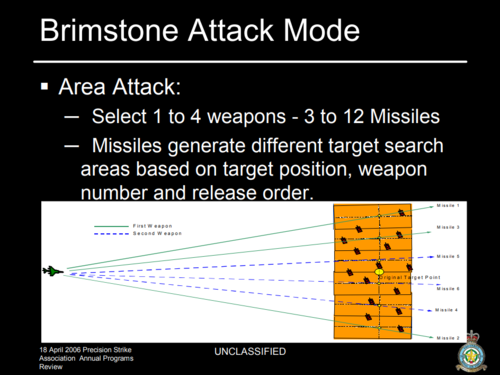
Last edited:
Let do a quick calculation.AHEAD AAA ammo terminates missiles in terminal phase, not sure how many times this has been repeated previously.
Meteor in terminal phase can be accelerated to Mach 4.5 thanks to its ramjet engine. PL-XX can reach Mach 5 when it dives from 98.000 ft
C-5 galaxy cruise speed is 833 km/h. So the closure rate at the terminal phase is 5612- km/h
Effective range of 35 mm AHEAD round is 4 km.
So you have 2.34 - 2.56 seconds from start of your interception till their missile impact with your aircraft
What if your enemy launches 2 missiles? you have 1.25 seconds, if they launch 10, you have 0.2 seconds for each missiles.
Good luck
If the size of the missile and the size of the missile fired from the gun are the same, then you could be correct.A cannon need not weight much and recoiless technology for essentially a missile firing gun will always beat a missile alone. Especially a recoilless EMRG (AF patent) potentially combined w/ missile munition also previous stated.
Additionally, an hybrid EM/RLPG utilizing Next Gen energetics inside the barrel and inside missile/rd is quite doable gven the research already accomplished w/ D2 rd during the SDI program.
But an aircraft or any vehicle can always carry bigger rail launched missile than they can carry cannon launched missile.
Flechettes decelerate very quick and really nothing stop engineer from putting them on missiles if they are really that effective. And there is no need for these gun when they can already put missiles that can fly thousands kilometers on tactical fighterA C-5 or 747 or C-17 is only a stepping stone to something tactical, likewise sensors would sense muliple missiles from long range for elimination by hypersonic clouds of flechetes traveling long distances just destroyin the missile and fighter in same shot. Cued by sat planes aircraft guns w/ these ranges could pop planes right off the runway. Dogfight, more like a fly swat.
Last edited:
jsport
what do you know about surfing Major? you're from-
- Joined
- 27 July 2011
- Messages
- 7,736
- Reaction score
- 5,755
Large missiles can be carried by any craft including a cannon fighter. For efficiency one would use a bomber to carry large missiles.
..will not to explain the miniaturization enabled by SDI research and next generation energetics again. By your own slides missiles are becomming much smaller.
The major reason of the cannon is overcome AHEAD AAA for ground attack but eventually you are facing rail gun AAA as well according to AFRL. A to G missiles are skeet all day. More importantly you are facing fighters w AHEAD proximity fusing autocannons to counter your missiles in Air to Air. A to A and A to G missiles are then ... in every scenario.
Again, Sat cueing allows the railgun to fire when the planes leave the ground. Flechettes activate on AHEAD fuse after the warhead itself has traveled 100s of Km detonating on cue destroy any missile all day as fighters will greatly outnumber and their missiles even more. The US simply will not have the number of expensive missiles to overcome even inferior waves of oncoming A to A missiles. US fighters and bombers would simply be attrited away before reaching targets, having no means to
overcome
1. AHEAD AAA at terminal defending A to G targets
2. hardened A to G targets (as stated some time ago)
3. fighters w/ AHEAD autocannon rds. defending A to G targets
4. the few anti-aircraft railguns defending A to G targets.
5. hypersonic UCAV, cruise missles etc.
6. S-500 and more advanced SAMs w/ ranges eventually reaching 1000kms or more
..will not to explain the miniaturization enabled by SDI research and next generation energetics again. By your own slides missiles are becomming much smaller.
The major reason of the cannon is overcome AHEAD AAA for ground attack but eventually you are facing rail gun AAA as well according to AFRL. A to G missiles are skeet all day. More importantly you are facing fighters w AHEAD proximity fusing autocannons to counter your missiles in Air to Air. A to A and A to G missiles are then ... in every scenario.
Again, Sat cueing allows the railgun to fire when the planes leave the ground. Flechettes activate on AHEAD fuse after the warhead itself has traveled 100s of Km detonating on cue destroy any missile all day as fighters will greatly outnumber and their missiles even more. The US simply will not have the number of expensive missiles to overcome even inferior waves of oncoming A to A missiles. US fighters and bombers would simply be attrited away before reaching targets, having no means to
overcome
1. AHEAD AAA at terminal defending A to G targets
2. hardened A to G targets (as stated some time ago)
3. fighters w/ AHEAD autocannon rds. defending A to G targets
4. the few anti-aircraft railguns defending A to G targets.
5. hypersonic UCAV, cruise missles etc.
6. S-500 and more advanced SAMs w/ ranges eventually reaching 1000kms or more
Last edited:
The point is why use a cannon when you can carry missiles just as small and very big missiles that have far greater capability offered by the cannon launched projectilesLarge missiles can be carried by any craft including a cannon fighter. For efficiency one would use a bomber to carry large missiles.
..will not to explain the miniaturization enabled by SDI research and next generation energetics again. By your own slides missiles are becomming much smaller.
You are talking about a future cannon system that maybe, just maybe reaches 500 kilometers and that is already questionableAgain, Sat cueing allows the railgun to fire when the planes leave the ground. Flechettes activate on AHEAD fuse after the warhead itself has traveled 100s of Km detonating on cue destroy any missile all day as fighters will greatly outnumber and their missiles even more.
Whereas at the moment we already have Kinzhal which can be launched from fighter from 2000 km and terminal velocity near Mach 10
LRASM which can be launched from 1000 km also from tactical fighter
There is nothing stop the designer from putting flechette warhead on these missiles, so what exactly the reason for the heavy cannon system that can only be carried by an airliner?
Hypersonic weapon such as HAWC can cruise at Mach 5, ground target either moving very slow or stationary so the closure rate is 5310 km/h. The effective range of 35 mm AHEAD round is 4 km. So you have less than 2.7 seconds to intercept a hypersonic missiles with your AHEAH cannon before it hit. I don't think anyone will attack with a single hypersonic missile. If they launch 2 missiles you have 1.35 seconds to intercept each of them.The US simply will not have the number of expensive missiles to overcome even inferior waves of oncoming A to A missiles. US fighters and bombers would simply be attrited away before reaching targets, having no means to
overcome
1. AHEAD AAA at terminal defending A to G targets
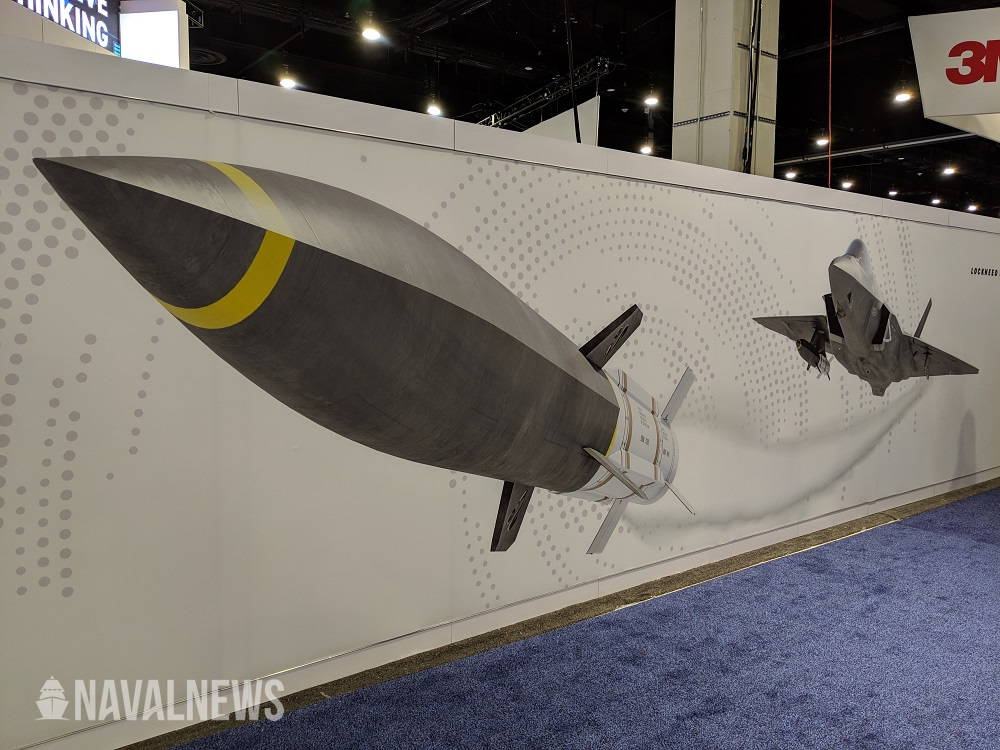
Or they can also use miniature cruise missiles.
cruising speed of SPEAR is Mach 0.85 -1037 km/h
The effective range of 35 mm AHEAD round is 4 km. You have 13.8 seconds to intercepts each missile before it destroys your radar.
That sounds like a lot until we realize that each F-35 can carry 8 of them internally and 24 with external configuration. That leaves you with 1.7 seconds to intercepts each missile if they launch 8 of them and 0.57 seconds to intercept each missile if they launch 24. You can have more defending cannon but they can also have more aircraft attacking you. But things don't stop there, SPEAR course can be programmed so that it doesn't go straight at target but approach from a different direction so multiple missiles can come from multiple directions at once. However, that not all, there is SPEAR-EW version with jamming ability so defeating each missiles is even harder now.
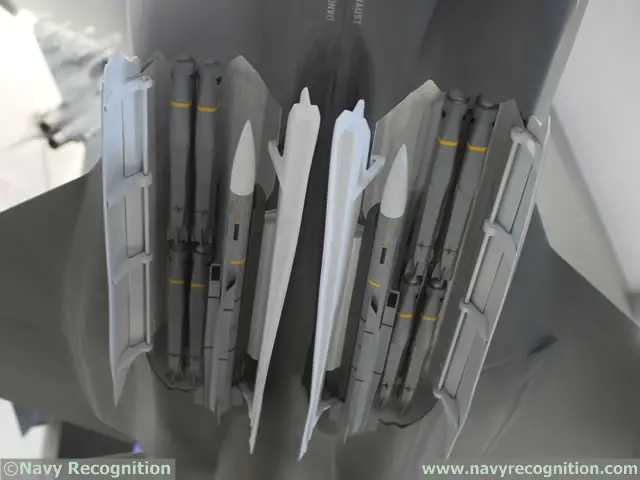


Missiles and bombs are heavier than cannon rounds and they are just as fast if not faster in many cases. So they have better penetration capability2. hardened A to G targets (as stated some time ago)
Refer to calculation above, reaction time is too short to use AHEAD round to defend against missiles.3. fighters w/ AHEAD autocannon rds. defending A to G targets
Rail guns are immobile defenses that lack the capability to engage multiple targets coming from different directions at the same time. They are far weaker to a saturation attack by miniature cruise missiles than SAM.4. the few anti-aircraft railguns defending A to G targets.
Missiles are more suited to deal with those5. hypersonic UCAV, cruise missles etc.
They can use:6. S-500 and more advanced SAMs w/ ranges eventually reaching 1000kms or more
- Stealth
- Jamming
- Nap of the earth flight
- Long range cruise missile
- Long range hypersonic missile
- Decoys
Last edited:
jsport
what do you know about surfing Major? you're from-
- Joined
- 27 July 2011
- Messages
- 7,736
- Reaction score
- 5,755
The point is why use a cannon when you can carry missiles just as small and very big missiles that have far greater capability offered by the cannon launched projectilesLarge missiles can be carried by any craft including a cannon fighter. For efficiency one would use a bomber to carry large missiles.
..will not to explain the miniaturization enabled by SDI research and next generation energetics again. By your own slides missiles are becomming much smaller.
You are talking about a future cannon system that maybe, just maybe reaches 500 kilometers and that is already questionableAgain, Sat cueing allows the railgun to fire when the planes leave the ground. Flechettes activate on AHEAD fuse after the warhead itself has traveled 100s of Km detonating on cue destroy any missile all day as fighters will greatly outnumber and their missiles even more.
Whereas at the moment we already have Kinzhal which can be launched from fighter from 2000 km and terminal velocity near Mach 10
LRASM which can be launched from 1000 km also from tactical fighter
There is nothing stop the designer from putting flechette warhead on these missiles, so what exactly the reason for the heavy cannon system that can only be carried by an airliner?
Hypersonic weapon such as HAWC can cruise at Mach 5, ground target either moving very slow or stationary so the closure rate is 5310 km/h. The effective range of 35 mm AHEAD round is 4 km. So you have less than 2.7 seconds to intercept a hypersonic missiles with your AHEAH cannon before it hit. I don't think anyone will attack with a single hypersonic missile. If they launch 2 missiles you have 1.35 seconds to intercept each of them.The US simply will not have the number of expensive missiles to overcome even inferior waves of oncoming A to A missiles. US fighters and bombers would simply be attrited away before reaching targets, having no means to
overcome
1. AHEAD AAA at terminal defending A to G targets

Or they can also use miniature cruise missiles.
cruising speed of SPEAR is Mach 0.85 -1037 km/h
The effective range of 35 mm AHEAD round is 4 km. You have 13.8 seconds to intercepts each missile before it destroys your radar.
That sounds like a lot until we realize that each F-35 can carry 8 of them internally and 24 with external configuration. That leaves you with 1.7 seconds to intercepts each missile if they launch 8 of them and 0.57 seconds to intercept each missile if they launch 24. You can have more defending cannon but they can also have more aircraft attacking you. But things don't stop there, SPEAR course can be programmed so that it doesn't go straight at target but approach from a different direction so multiple missiles can come from multiple directions at once. However, that not all, there is SPEAR-EW version with jamming ability so defeating each missiles is even harder now.



Missiles and bombs are heavier than cannon rounds and they are just as fast if not faster in many cases. So they have better penetration capability2. hardened A to G targets (as stated some time ago)
Refer to calculation above, reaction time is too short to use AHEAD round to defend against missiles.3. fighters w/ AHEAD autocannon rds. defending A to G targets
Rail guns are immobile defenses that lack the capability to engage multiple targets coming from different directions at the same time. They are far weaker to a saturation attack by miniature cruise missiles than SAM.4. the few anti-aircraft railguns defending A to G targets.
Missiles are more suited to deal with those5. hypersonic UCAV, cruise missles etc.
They can use:6. S-500 and more advanced SAMs w/ ranges eventually reaching 1000kms or more
- Stealth
- Jamming
- Nap of the earth flight
- Long range cruise missile
- Long range hypersonic missile
- Decoys
The point is why use a cannon when you can carry missiles just as small and very big missiles that have far greater capability offered by the cannon launched projectilesLarge missiles can be carried by any craft including a cannon fighter. For efficiency one would use a bomber to carry large missiles.
..will not to explain the miniaturization enabled by SDI research and next generation energetics again. By your own slides missiles are becomming much smaller.
You are talking about a future cannon system that maybe, just maybe reaches 500 kilometers and that is already questionableAgain, Sat cueing allows the railgun to fire when the planes leave the ground. Flechettes activate on AHEAD fuse after the warhead itself has traveled 100s of Km detonating on cue destroy any missile all day as fighters will greatly outnumber and their missiles even more.
Whereas at the moment we already have Kinzhal which can be launched from fighter from 2000 km and terminal velocity near Mach 10
LRASM which can be launched from 1000 km also from tactical fighter
There is nothing stop the designer from putting flechette warhead on these missiles, so what exactly the reason for the heavy cannon system that can only be carried by an airliner?
Hypersonic weapon such as HAWC can cruise at Mach 5, ground target either moving very slow or stationary so the closure rate is 5310 km/h. The effective range of 35 mm AHEAD round is 4 km. So you have less than 2.7 seconds to intercept a hypersonic missiles with your AHEAH cannon before it hit. I don't think anyone will attack with a single hypersonic missile. If they launch 2 missiles you have 1.35 seconds to intercept each of them.The US simply will not have the number of expensive missiles to overcome even inferior waves of oncoming A to A missiles. US fighters and bombers would simply be attrited away before reaching targets, having no means to
overcome
1. AHEAD AAA at terminal defending A to G targets

Or they can also use miniature cruise missiles.
cruising speed of SPEAR is Mach 0.85 -1037 km/h
The effective range of 35 mm AHEAD round is 4 km. You have 13.8 seconds to intercepts each missile before it destroys your radar.
That sounds like a lot until we realize that each F-35 can carry 8 of them internally and 24 with external configuration. That leaves you with 1.7 seconds to intercepts each missile if they launch 8 of them and 0.57 seconds to intercept each missile if they launch 24. You can have more defending cannon but they can also have more aircraft attacking you. But things don't stop there, SPEAR course can be programmed so that it doesn't go straight at target but approach from a different direction so multiple missiles can come from multiple directions at once. However, that not all, there is SPEAR-EW version with jamming ability so defeating each missiles is even harder now.



Missiles and bombs are heavier than cannon rounds and they are just as fast if not faster in many cases. So they have better penetration capability2. hardened A to G targets (as stated some time ago)
Refer to calculation above, reaction time is too short to use AHEAD round to defend against missiles.3. fighters w/ AHEAD autocannon rds. defending A to G targets
Rail guns are immobile defenses that lack the capability to engage multiple targets coming from different directions at the same time. They are far weaker to a saturation attack by miniature cruise missiles than SAM.4. the few anti-aircraft railguns defending A to G targets.
Missiles are more suited to deal with those5. hypersonic UCAV, cruise missles etc.
They can use:6. S-500 and more advanced SAMs w/ ranges eventually reaching 1000kms or more
- Stealth
- Jamming
- Nap of the earth flight
- Long range cruise missile
- Long range hypersonic missile
- Decoys
[/QUOTE/}
If gold was falling from trees there would not be enough money to pay for two massive HAWCS to attack the hundreds if not thousands of hardened and SEAD targets in Asia. Surely you have not read the study that started this whole thread months and months ago discussing how Pacific targets are too plentiful, too far away (half the Pacific at least) and too hardened for the US to ever suppress. ie no SEAD and US loses Pacific battle.
Hypers have little time to maneuver themselves at terminal and there would be plenty of IR cueing to assure a AHEAD kill. Whereas a EMScram Gun puts Mach 10 right in the kisser until all the kissers are gone and then one can bomb all month w cheap Wind Corrected Bombs.
The goal of Cannon fighter is to engage w/ AHEAD fused EMScram Gun at range via sat cue therefore plenty on time to kill fighter no worry of missiles . again and again
Railguns are mobile (Turkey already has one.) and easily protected by fast acting mobile AHEAD fused rd 35mm guns (Like PRC already deploys) which make meat of slow incoming smalls. Again again again repeating on infinitum Smalls are skeet to AHEAD unless they come fast, Simple guidance can be inserted into a very hardened very fast EM SCRAM gun rd.
Adversary Hypersonic UCAV sensor can easly see a oncoming missile and rapidly jink outmaneuver it, whereas clouds of whole parts of the sky will intercept.
Stealth has been rendered to near useless w/ modern sensors...mult sensors.. You cant nap of earth on the Pacific. Even 300s look down so no friendly large missiles and aircraft will escape intercept especially after flying over open ocean for a 1000miles.
Russian quality and no AHEAD.
U Kansas Prof Ron Barret can guide a 5.56mm rd from its nose and has been for a decade. LM does the same.
Below are conventional guns w/ rocket assist ie way more primitive than this could and should go Hybrid EMRG/Hydrogen (light Gas) Gun. Conservative range from highest altitude 1500km w/ scram terminal acceleration to overcome AHEAD.
Attachments
Last edited:
You can attack them with cheap air-launched ballistic missiles or mininature cruise missile as well, HAWC is just one of the way.If gold was falling from trees there would not be enough money to pay for two massive HAWCS to attack the hundreds if not thousands of hardened and SEAD targets in Asia. Surely you have not read the study that started this whole thread months and months ago discussing how Pacific targets are too plentiful, too far away (half the Pacific at least) and too hardened for the US to ever suppress. ie no SEAD and US loses Pacific battle.
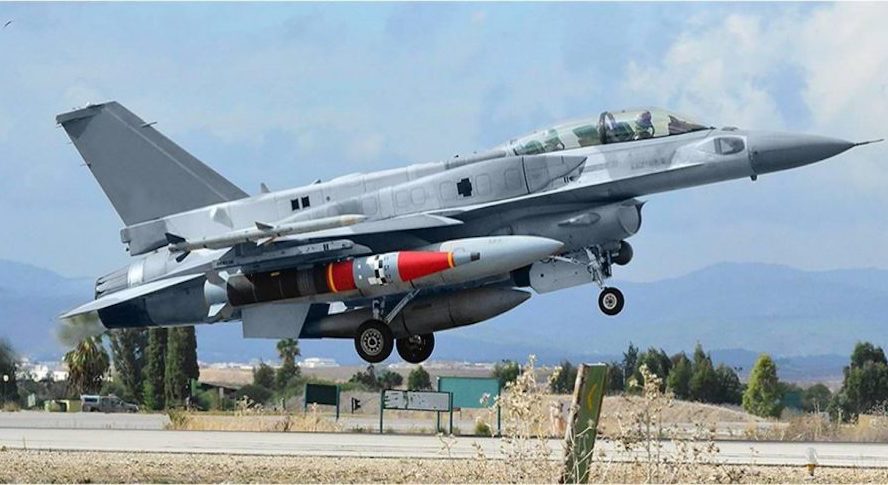
They don't need to maneuver much when your cannon has 1.3 seconds to intercept them, in fact less than that because if the missile is destroyed too close to your radar, the fragments still moving toward you at Hypersonic speed.Hypers have little time to maneuver themselves at terminal and there would be plenty of IR cueing to assure a AHEAD kill.
and that gun doesn't exist, except on paper. The closest we have now is the rail gun being developed for Zumwalt destroyer.Whereas a EMScram Gun puts Mach 10 right in the kisser until all the kissers are gone and then one can bomb all month w cheap Wind Corrected Bombs.
The current prototype weighs more than 20 tons, require 25 megawatts of power to accelerate a projectile to Mach 7 and terminal velocity at Mach 5, max range is 200 miles.
It sure as heck won't fit on any fighter. Besides the range and velocity still inferior to hypersonic missile
You can always do the same thing by missiles from longer range with better terminal velocity and require smaller platformsThe goal of Cannon fighter is to engage w/ AHEAD fused EMScram Gun at range via sat cue therefore plenty on time to kill fighter no worry of missiles . again and again
You mean this thing?Railguns are mobile (Turkey already has one.) and easily protected by fast acting mobile AHEAD fused rd 35mm guns (Like PRC already deploys) which make meat of slow incoming smalls. Again again again repeating on infinitum Smalls are skeet to AHEAD unless they come fast, Simple guidance can be inserted into a very hardened very fast EM SCRAM gun rd.
Max range of only 50 km and with no multiple targets capability?
Miniature cruise missiles are not skeet to 35 mm AHEAD cannon, as I already calculated for you. Because they are small, they can be carried in large quantities. Because their flight path can be adjust, they can be programmed to arrive at the same target from different directions. If they pop 8 of those (and they can because that the internal load of a small fighter like F-35), you will have only 1.7 seconds to intercept each missile ( including the time to rotate your cannon to the required direction). And we haven't considered the fact that SPEAR-EW will make many of your shots miss thanks to its jammer. Those small missiles also have very low IR, Visual and Radar signature so they aren't easy to track at all.
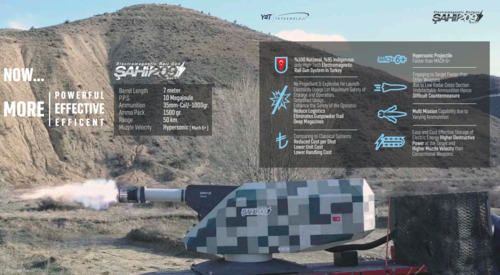
If they can detect a coasting missile then they can also detect your rail launched artillery round. Besides, you can't just jink out with a hypersonic aircraft to out maneuver missiles. Missile have proximity fuse so they will explode even if they don't collide with your aircraft.Adversary Hypersonic UCAV sensor can easly see a oncoming missile and rapidly jink outmaneuver it, whereas clouds of whole parts of the sky will intercept
Secondly, there is literally nothing stopping them from putting flechette warhead on missiles if they are really as effective as you think.
It isn't, if it was then F-35, NGF, F-22, Su-57,ATD, J-20, J-31 wouldnt all have stealth.Stealth has been rendered to near useless w/ modern sensors...mult sensors...
and stealth aircraft aren’t only LO vs radar : https://basicsaboutaerodynamicsandavionics.wordpress.com/2016/03/04/stealth-techniques-and-benefits/
You can, missiles do that all the time, it called sea-skimming. It is in fact easier to nap the earth on the ocean because there is no MANPADS threat and there is no mountains or towerYou cant nap of earth on the Pacific. Even 300s look down so no friendly large missiles and aircraft will escape intercept especially after flying over open ocean for a 1000miles.
They have 4 Pantsir-S1 shooting at a low subsonic RC drone whereas you propose using 35 mm AHEAD cannon to defense against high subsonic cruise missiles from multiple directions and hypersonic missiles. Their engagement times are more than a dozen seconds while your is less than 1.3-1.7 secondsRussian quality and no AHEAD.
What does this have to do with anything?U Kansas Prof Ron Barret can guide a 5.56mm rd from its nose and has been for a decade. LM does the same
Unnecessary, 35 mm AHEAD can't even defense against saturation attack with miniature cruise missiles.Conservative range from highest altitude 1500km w/ scram terminal acceleration to overcome AHEAD.
Last edited:
jsport
what do you know about surfing Major? you're from-
- Joined
- 27 July 2011
- Messages
- 7,736
- Reaction score
- 5,755
Railgun research in its infancy in the US (although it isnt) and we will not know what the Russians and Chinese have (they are now old hats in superguns and EMRG) until it is too late. Mini cruise missiles are low range and expensive and as the Pac War study has already determined the US can not build/afford enough missiles or aircraft to survive and win in the Pac. Thus the thead. When you have too many targets and not enough aircraft or missiles you lose. Minus your cognizance of thes facts of 2030 timeframe this is becoming pointless.
Detecting a gun launch is easy but avoidiing the round especially since the round has Hypersonic guidance and manever accomplished w/ simple nose azimuth changes is impossible. The warhead is only detected as oncoming hypersonic is destroyed. Nose Azimuth changes also give huge range benefits for anyone understanding hypersonics or even supersonics. Missiles are too large to ever be utilized nose azimuth actuation.
Anyone who pays any attention to the defense press and this forum knows Stealth is highly in question. the Czech company Tesla sells ESM systems, for instance, which have no problem detecting stealth at range.. The Russians and China are well along in ESM to detect stealth at range. This displays a stunning lack of knowledge frankly. Europe will do stealth only because composites are way to go not because stealth can be counted on at all.
IR wide area suveilance will be easy in very near future China's will have the numbers to cover all the Pac and there will be no sneaking on them.
Bad mouthing AHEAD is an emotional uninformed biased boderdash argument not worthy of this forum.
Detecting a gun launch is easy but avoidiing the round especially since the round has Hypersonic guidance and manever accomplished w/ simple nose azimuth changes is impossible. The warhead is only detected as oncoming hypersonic is destroyed. Nose Azimuth changes also give huge range benefits for anyone understanding hypersonics or even supersonics. Missiles are too large to ever be utilized nose azimuth actuation.
Anyone who pays any attention to the defense press and this forum knows Stealth is highly in question. the Czech company Tesla sells ESM systems, for instance, which have no problem detecting stealth at range.. The Russians and China are well along in ESM to detect stealth at range. This displays a stunning lack of knowledge frankly. Europe will do stealth only because composites are way to go not because stealth can be counted on at all.
IR wide area suveilance will be easy in very near future China's will have the numbers to cover all the Pac and there will be no sneaking on them.
Bad mouthing AHEAD is an emotional uninformed biased boderdash argument not worthy of this forum.
unless they can bend physics laws, a rails gun that can accelerate projectiles to Mach 7 won't be small or light enough to be carried by fighter.Railgun research in its infancy in the US (although it isnt) and we will not know what the Russians and Chinese have (they are now old hats in superguns and EMRG) until it is too late.
SPEAR range is 140 km => 2.8 times longer range than Turkey mobile rail gunMini cruise missiles are low range and expensive
When your enemy's missiles out range your cannon, when they can engage multiple targets at once while you can't, when they can attack targets from standoff distance with small tactical aircraft while you have to use airliner. You will also lose.and as the Pac War study has already determined the US can not build/afford enough missiles or aircraft to survive and win in the Pac. Thus the thead. When you have too many targets and not enough aircraft or missiles you lose. Minus your cognizance of thes facts of 2030 timeframe this is becoming pointless.
That is utter nonsense. It is not impossible to avoid a hypersonic round, especially considering that at long range they will move slower than missiles because they start their deceleration phase earlier and they also start the deceleration phase in thicker air. Second of all, putting control surface at the nose instead of the back give no range benefit and it doesn't make the cannon round more maneuver than air to air missile because the later have much greater lifting surface area. That means at any given AoA , missile can generate much higher normal force to change direction.Detecting a gun launch is easy but avoidiing the round especially since the round has Hypersonic guidance and manever accomplished w/ simple nose azimuth changes is impossible. The warhead is only detected as oncoming hypersonic is destroyed. Nose Azimuth changes also give huge range benefits for anyone understanding hypersonics or even supersonics. Missiles are too large to ever be utilized nose azimuth actuation.
FYI, there are many missiles with control surface at the nose such as AIM-9M, R-73, FIM-92, SA-18..etc they are not anymore maneuverable than missiles with control surfaces at rear end such as AIM-9X, AIM-132.
Anyone who knows anything about how ESM operate can tell you with high degree of confidence that they are far from anti stealth device.Anyone who pays any attention to the defense press and this forum knows Stealth is highly in question. the Czech company Tesla sells ESM systems, for instance, which have no problem detecting stealth at range.. The Russians and China are well along in ESM to detect stealth at range. This displays a stunning lack of knowledge frankly.
Since you mentioned Czech ESM, let talk about VERA-E, one of their most modern ESM system.
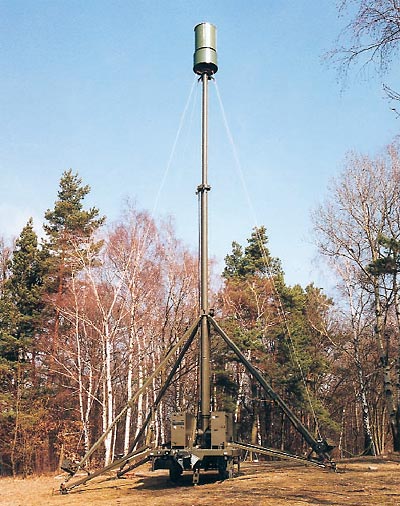
Vera-E uses measurements of time difference of arrival (TDOA) of a pulse at three to four sites to track the location of target.
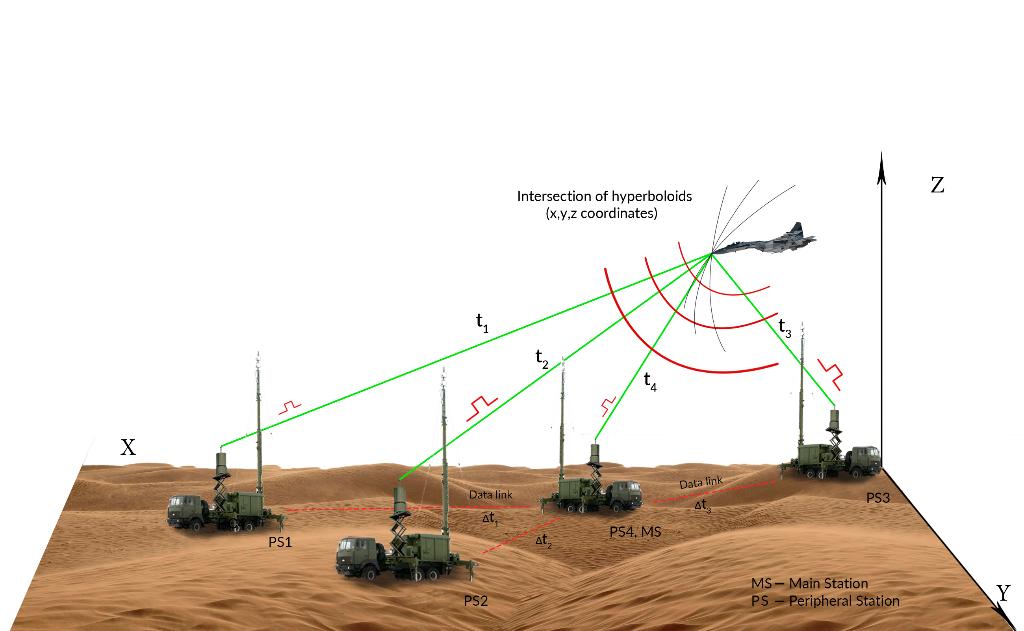
After receiver at each site detect a pulse, they will send information to Command vehicle where the location of target can be measured
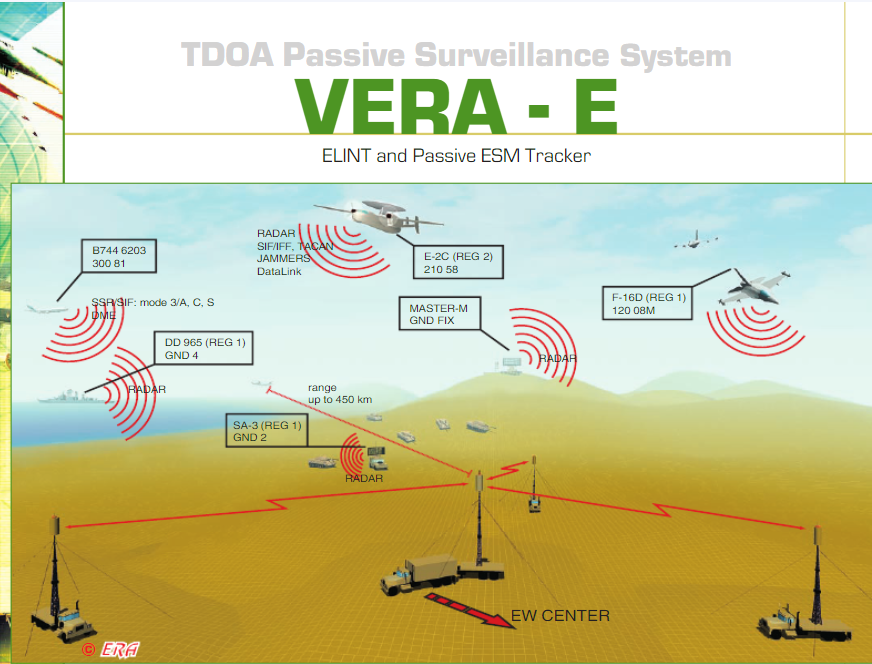
In theory this is the perfect counter to stealth, because aircraft radio transmission is an independent part, not related to their radar cross section. However, in real life, VERA isn't very effective, because for TDOA to locate the source of the radio transmission, the pulse they receive at different site must be the same pulse, just at different time. Time different of arrival will make no sense if they transmitting 2 separate pulse because the time different then will not depend on the distance from the source to your receiver but the transmitter's pulse repeation frequency. Another weakness of TDOA is the need for 3 receivers at the minumum to receive the same pulse or the uncertainty area will be extremely large.
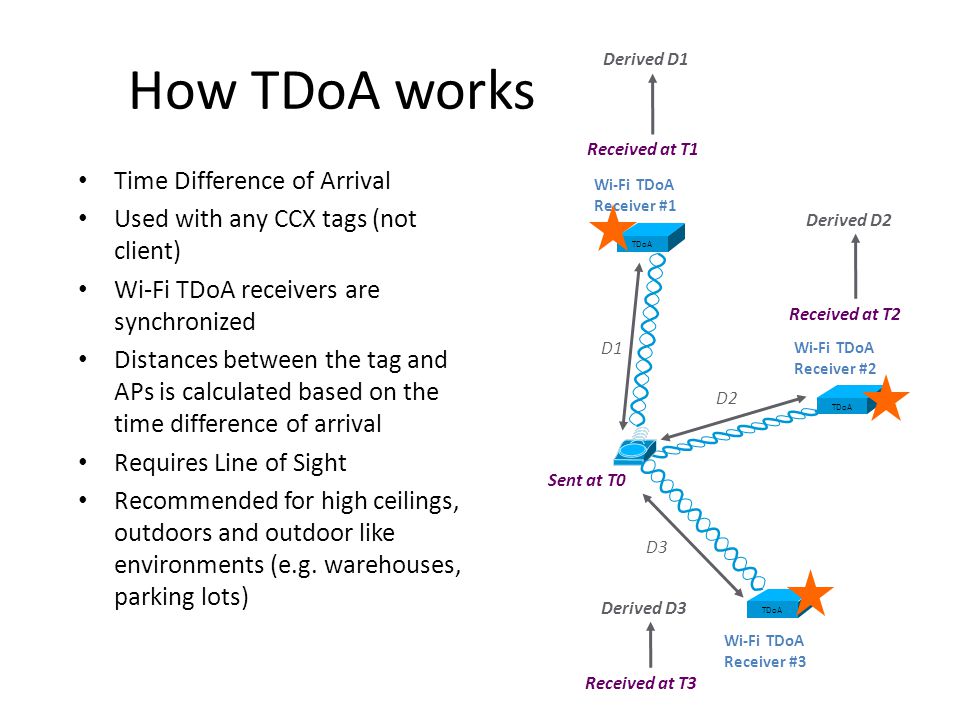
It is very easy to counter TDOA method, for any transmitter on your aircraft, wherther it is radar or datalink, you need to narrow the beamwidth of the main lobes and reduce the power of the side lobes. And that exactly what the designer do with stealth aircraft. Their AESA radar have very narrow beamwidth and very low power sidelobes compared to parabolic radar, their datalink such as MADL, IFDL are directional datalink instead of omnidirectional like Link 16 so they never illuminate more than 1 receiver site at a time.
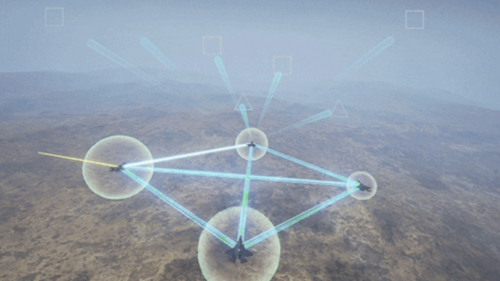
IR system can have wide FoV or long range, but not both at the same timeIR wide area suveilance will be easy in very near future China's will have the numbers to cover all the Pac and there will be no sneaking on them.
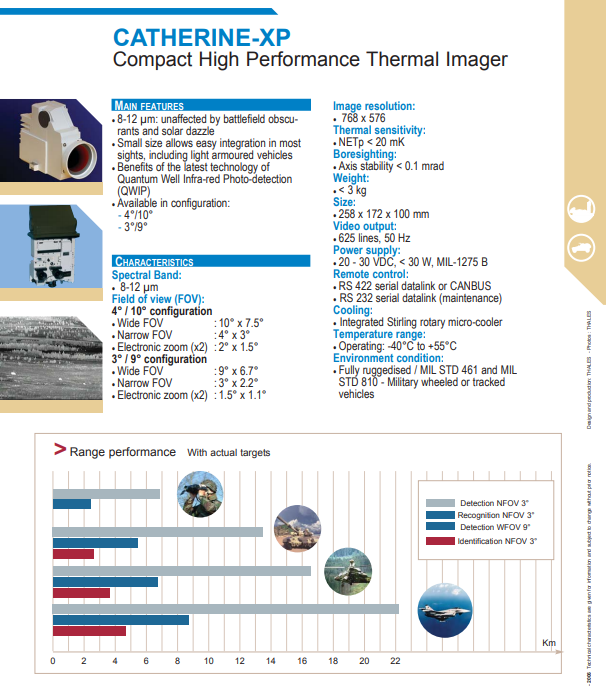
And stealth aircraft use several ways to reduce their IR signature

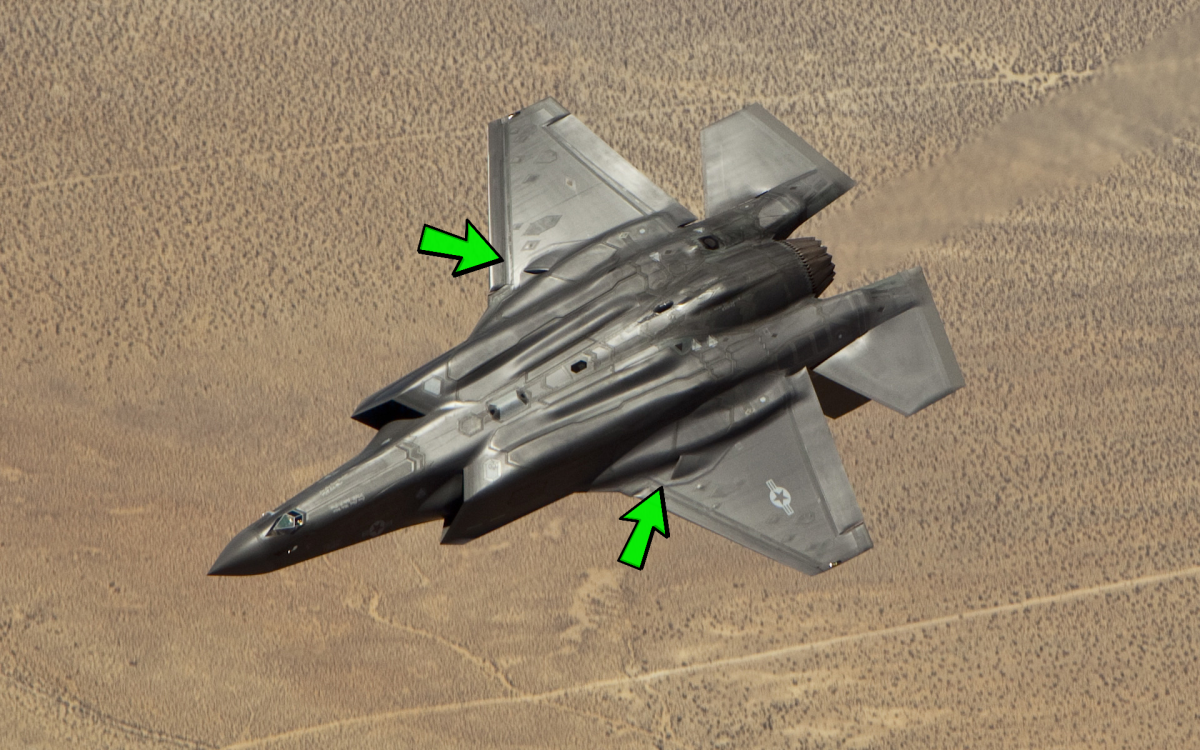
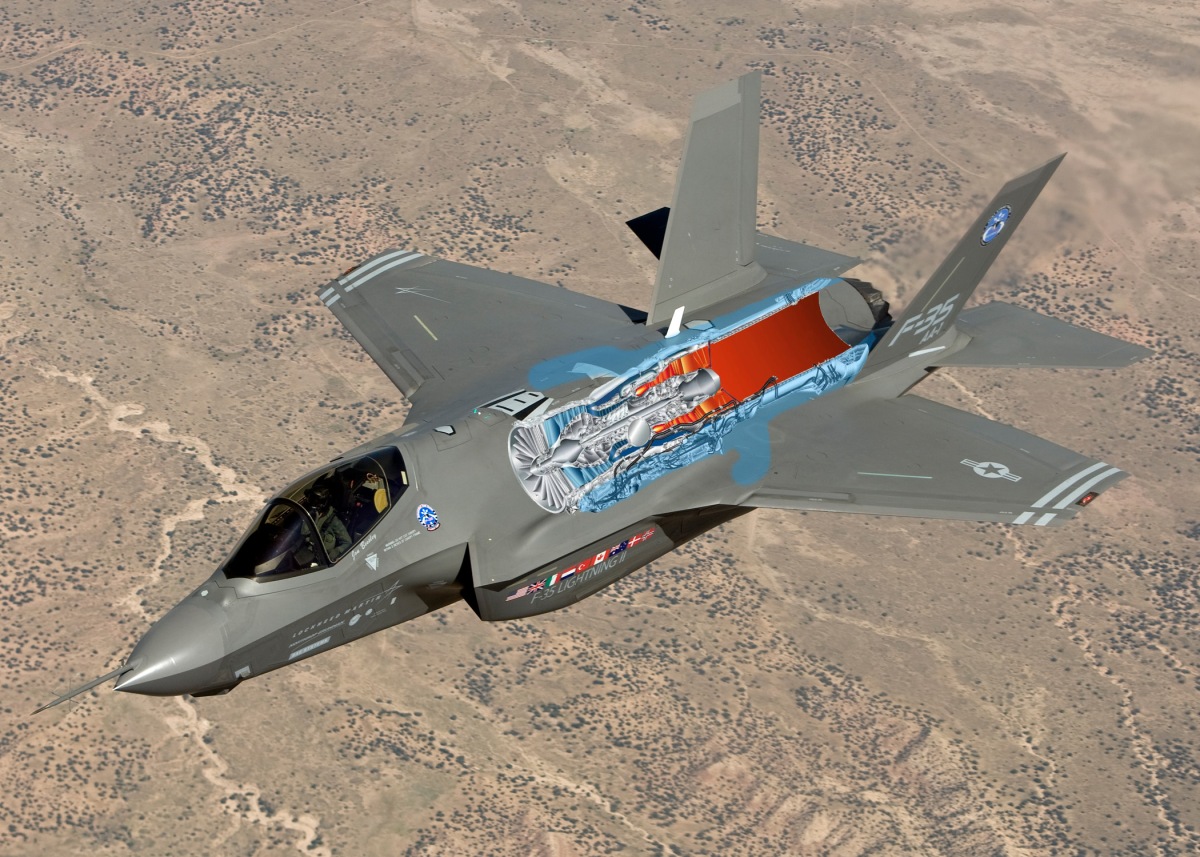
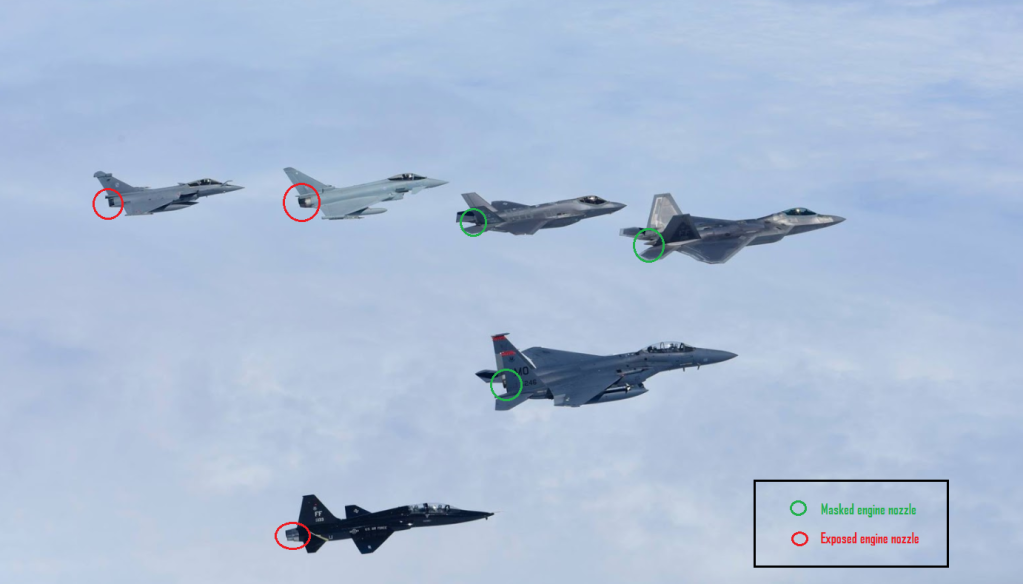
I am not bad-mouthing AHEAD, I show you a simple calculation to explain to you why they won't be effective. Maths isn't bias, it is what it is and it doesn't care about your love for AHEAD round.Bad mouthing AHEAD is an emotional uninformed biased boderdash argument not worthy of this forum
jsport
what do you know about surfing Major? you're from-
- Joined
- 27 July 2011
- Messages
- 7,736
- Reaction score
- 5,755
First.. will take Rand on whether there will be enough missiles and aircraft to surpress all PRC targets into 2050, SEAD does not happen .w/o something radical. Rand states the USAF will not prevail on the current procurement path. Likewise other studies show ships magazines will be expended efore the Pac is secure. An alternative is the Army 1000mile gun, and or a ship supergun , and an aircraft gun eventually a tactical cannon fighter is ones only hope so we can keep on and on..
AHEAD are cued by multiple sensors not just the radar on the PRC mobile 35mm gun truck so.....The small UAS, mini- missile have get to past the thick AAA belts of a AHEAD and non AHEAD guns defended targets (they wont) and then limited aircraft still have to defeat the hardened target in high hundreds but by up to thousands by 2050 ,according to RAND, if SEAD and Air Superiority are to occ ur. there will not be enough aircraft or missiles of for the millionth time. By 2050 the limited aircraft may start being attrited as much as 1000miles out. This no winner.
No airliners, Nex Gen fighters. The NGAD program which knows a conventional FA-XX wont cut it so is back to the Digital Aircraft Industrial Design revolution according to AW&ST.
Nose actuation provides maneuver sure but the real reason is lift for an otherwise not lifting body. Not aware that any missile is designed for additional lift w/ an actuating nose but would be great hear how much lift gain they are claiming.
You must not be familair w/ how light a light gas gun augmented by a railgun/coil gun can be. no physics broken in the patents. Especailly where modern material science is up to 2020-30s the timeframe necessary into 2050. relatively medium size Light gas guns can launch into orbit since the 90s. EM may be used only to assure frictionless launch.
If your cueing multipe smart fused rds w/ cheap SCRAM terminal you inexpensively negate even maneuvering hypersonic missiles and dont spent a fortune on a miss. You have money for two missiles maybe and if they miss ..atomic bomb. Would bet on a gun.
That is nice tutorial on datalinks that I was quite aware of for maybe 20yrs and a lesson on TDOA from about 30 yrs ago.. US aircraft dont even need to comm to be detected across the wide spanse of ocean.
Well aware there are multiple means of stealth but ESM combined w/ other means even UV, bistaic HF radar etc. there will be no surprises to the PRC coast. Ripples in the EM curtain can not go undetected it is simply a challenge for processors. Threats and their processing are moving well along.
vendors WFOV internet advertisment.... Both the US and Israel have simultanious Wide and narrow sensors and the rest of the world will be there quite soon not to mention the Pac is full of the other PLAN Navy of unmarked vessels.
AHEAD are cued by multiple sensors not just the radar on the PRC mobile 35mm gun truck so.....The small UAS, mini- missile have get to past the thick AAA belts of a AHEAD and non AHEAD guns defended targets (they wont) and then limited aircraft still have to defeat the hardened target in high hundreds but by up to thousands by 2050 ,according to RAND, if SEAD and Air Superiority are to occ ur. there will not be enough aircraft or missiles of for the millionth time. By 2050 the limited aircraft may start being attrited as much as 1000miles out. This no winner.
No airliners, Nex Gen fighters. The NGAD program which knows a conventional FA-XX wont cut it so is back to the Digital Aircraft Industrial Design revolution according to AW&ST.
Nose actuation provides maneuver sure but the real reason is lift for an otherwise not lifting body. Not aware that any missile is designed for additional lift w/ an actuating nose but would be great hear how much lift gain they are claiming.
You must not be familair w/ how light a light gas gun augmented by a railgun/coil gun can be. no physics broken in the patents. Especailly where modern material science is up to 2020-30s the timeframe necessary into 2050. relatively medium size Light gas guns can launch into orbit since the 90s. EM may be used only to assure frictionless launch.
If your cueing multipe smart fused rds w/ cheap SCRAM terminal you inexpensively negate even maneuvering hypersonic missiles and dont spent a fortune on a miss. You have money for two missiles maybe and if they miss ..atomic bomb. Would bet on a gun.
That is nice tutorial on datalinks that I was quite aware of for maybe 20yrs and a lesson on TDOA from about 30 yrs ago.. US aircraft dont even need to comm to be detected across the wide spanse of ocean.
Well aware there are multiple means of stealth but ESM combined w/ other means even UV, bistaic HF radar etc. there will be no surprises to the PRC coast. Ripples in the EM curtain can not go undetected it is simply a challenge for processors. Threats and their processing are moving well along.
vendors WFOV internet advertisment.... Both the US and Israel have simultanious Wide and narrow sensors and the rest of the world will be there quite soon not to mention the Pac is full of the other PLAN Navy of unmarked vessels.
Last edited:
Keeping up with this thread is getting tough, which is a good thing 
Er, it's right there in the picture/chart you posted: P/B (Propellant to Projectile weight ratio) and total weight. Plus the example round I listed showed total round mass including propellant.
A Stryker Gun System Field Manual I can't find atm The numbers actually stuck with me as it's kind of odd, (for example aircraft pallets have a similar but are listed as 8+/4-G and most others are similar so that one i would think should read "+7/-3" but It was the only one I could find with a quick search) In context it made sense since the paragraph was describing 'firing on the move' which used the example of firing in the air after coming off a slope and then again as it hit the ground. Whether you'd actually DO that at all I'd question but the autoloader is supposed to be rated for it.
The numbers actually stuck with me as it's kind of odd, (for example aircraft pallets have a similar but are listed as 8+/4-G and most others are similar so that one i would think should read "+7/-3" but It was the only one I could find with a quick search) In context it made sense since the paragraph was describing 'firing on the move' which used the example of firing in the air after coming off a slope and then again as it hit the ground. Whether you'd actually DO that at all I'd question but the autoloader is supposed to be rated for it.
Secondly, an artillery shell sensor must be better hardener than missile sensor because it must be able to withstand high acceleration.
Moreover because the artillery shell has smaller diameter than the missile (because putting very big gun on fighter seem implausible), so their sensor whether it is radar or IR sensor will have smaller aperture size => guided artillery shell's sensor will be shorter range and less resistant to jamming. And, missiles are bigger than 105 mm shell so they can carry bigger battery, bigger battery mean their sensor can operate longer or at higher out put.[/quote]
The study looked at shells up to 155mm while the AC130 one I posted was using a 120mm mortar shell as a basic round so it's not that clear cut. The sensors and guidance systems weren't readily available in the late 70s but they are not as are propulsion and aerodynamic shell design. Smaller doesn't automatically mean easier to jam or spoof which (this would reverse apply to small missiles obviously and that's not true in their case either ) Battery size has some effect on lifetime but keep in mind both the shell and missile will tend to have higher velocity than you keep thinking they will AND you have other methods to extend or supplment the battery for power.
) Battery size has some effect on lifetime but keep in mind both the shell and missile will tend to have higher velocity than you keep thinking they will AND you have other methods to extend or supplment the battery for power.
Artillary shell design includes base drag reduction and things like base bleed to extend their range which can be augmented by shell ballistic aero design. LIfting body shells have been tested, and small deployable aerosurfaces have significant effect as well.
You missed the fact these are assisted or propelled shells for the most part even in the original study. Further ramjet shells have been plausible for decades and are now coming into production which greatly extends the range and speed for the shells.
The only correct assumption here is the shell is lighter than a bigger missile, somewhat than a smaller one but that also means it can accellerate faster and manuever better than a missile due to that reduced mass. Keep in mind that both solid and liquid propellant ramjets, (true of missiles as well) can be programed to adjust terminal approach velocity which is the whole point.
So does a lifting body shell and the ramjet shells will use body and 'cowl' lift to extend the range even more. Strakes, wings, fins and engine cowl lift can (and are) all be applied to a shell as well as a missile.
7/8 seconds is long enough to get a good track and begin evasion and counter-measures, Metor's end game speed is around Mach 5 which is around the burn-out speed of a ramjet powered artillary shell so the argument still works. The advantage the Meteor has is range but one of the reasons for moving to smaller missiles even for BVR is that larger missiles no matter their speed are still easier to track. And if you can track it you have a higher chance to counter it.
Actually they can have TVC, (actually RCS would be a better desciption since it's more 'bang-bang' thrust in either case) and you've already pointed out the shells needs less lifting surface to achieve the same effect since they will be lighter to begin with. So the competition isn't as far as you're making it out to be.
Something to keep in mind is that it's NOT about a direct competition and never has been. Missiles like bombs will always have a place and advantage in many cases.
Nothing. It's been done and in the end it's all about the fragmentaton radius and damage curves. In the case of an AIM warhead you want a globular fragmentation zone because it's not likely the missile will approach at an exact angle. The flechette round would use a 'shotgun' pattern to include the most likely vectors of the evading aircraft. They both work for the system used
Note the 1 second rate was a species of Recoilless Rifle. The Stryker autoloader can shoot once every 10 seconds. The original study gun which used a seperate round/propellant was based on a test cannon that fired one round every 1.5 seconds and they believed the could increase that rate.
Got that, what I meant was that the Cannon Fighter in a similar mission can target and attack 15 to 30 targets in a single 'pass', or spread it over a the whole single sortie. Which was the point from the start of the concept.
I'll be honest, being an ex-ammo troop (Air Force) I'm more enclined to see this being a better fit for Army than Air Force operations despite the fact the system DOES have a prevelent and useful Air-To-Air component it's really more CAS. If you replaced the GAU-8 (https://en.wikipedia.org/wiki/GAU-8_Avenger) on the A-10 with this system, (saving whopping 29lbs ) would give it a gun with more effective range and killing power per round.
) would give it a gun with more effective range and killing power per round.
Randy
From the photo, it seems that only the shell is included and not the propellant?
Er, it's right there in the picture/chart you posted: P/B (Propellant to Projectile weight ratio) and total weight. Plus the example round I listed showed total round mass including propellant.
I haven't heard of that, can you cite a source?Autoloader and magazine were included in the figures. The autoloader and magazine system are from the Stryker Gun System which is rated at being able to load a round with 7+/4- G's which is adequate for the tasking assigned.
A Stryker Gun System Field Manual I can't find atm
I mean the major contributor of a round or missile cost are sensor, so smaller shell aren't necessary cheaper.More expensive than a 'dumb' shell but they are pretty standard now and cost is about equal in comparision even though the artillary shell version is better hardened
Secondly, an artillery shell sensor must be better hardener than missile sensor because it must be able to withstand high acceleration.
Moreover because the artillery shell has smaller diameter than the missile (because putting very big gun on fighter seem implausible), so their sensor whether it is radar or IR sensor will have smaller aperture size => guided artillery shell's sensor will be shorter range and less resistant to jamming. And, missiles are bigger than 105 mm shell so they can carry bigger battery, bigger battery mean their sensor can operate longer or at higher out put.[/quote]
The study looked at shells up to 155mm while the AC130 one I posted was using a 120mm mortar shell as a basic round so it's not that clear cut. The sensors and guidance systems weren't readily available in the late 70s but they are not as are propulsion and aerodynamic shell design. Smaller doesn't automatically mean easier to jam or spoof which (this would reverse apply to small missiles obviously and that's not true in their case either
Firstly, bigger wing will improve missile maneuverability because they are able to generate more lift, but bigger wing will reduce their range due to drag. So air to air missile often have smaller wing because they don't have a lot of energy to waste to drag like SAM not because they need more maneuvers. Nevertheless missiles still have better L/D ratio than artillery shell because they are longer than they are wide.
Artillary shell design includes base drag reduction and things like base bleed to extend their range which can be augmented by shell ballistic aero design. LIfting body shells have been tested, and small deployable aerosurfaces have significant effect as well.
Secondly, a shell fired by cannon system reaches maximum speed at the barrel end once it no longer propelled by the propellant then it will decelerate due to drag
a missile reaches maximum speed once its rocket motor burn out, then it will decelerate due to drag
You missed the fact these are assisted or propelled shells for the most part even in the original study. Further ramjet shells have been plausible for decades and are now coming into production which greatly extends the range and speed for the shells.
With similar maximum velocity, shells will start the deceleration phase sooner than missiles, because it will start the deceleration phase right at the barrel end whereas missiles start the deceleration phase a dozen kilometers forwards once motors run out. In addition, because a shell (that can be carried by fighter) will be lighter than a missile (that can be carried by fighter), they will decelerate quicker because they have less momentum. Furthermore, because shell reaches maximum speed at the barrel end, they already start deceleration phase in a thick atmosphere whereas AIM-120 take 7-8 seconds until it reaches maximum velocity when it already climbs to the higher altitude where air is thinner. In other words, let say Cannon fighter and missile fighter fly at 40.000 feet, their missiles and 105 mm shell both have Mach 5 maximum velocity, the artillery start deceleration at 40.000 ft whereas the missiles start the deceleration only once it reaches 50.000ft or higher. To sum up, missiles will have better terminal speed.
The only correct assumption here is the shell is lighter than a bigger missile, somewhat than a smaller one but that also means it can accellerate faster and manuever better than a missile due to that reduced mass. Keep in mind that both solid and liquid propellant ramjets, (true of missiles as well) can be programed to adjust terminal approach velocity which is the whole point.
Thirdly, missiles which designed to have high end-game capability often have very remarkable lifting surface area by mid body wing or inlets
Meteor inlet form very good lifting body
So does a lifting body shell and the ramjet shells will use body and 'cowl' lift to extend the range even more. Strakes, wings, fins and engine cowl lift can (and are) all be applied to a shell as well as a missile.
AIM-120D motors only burn for 7-8 seconds, at long range it won't matter.
Meteor's motors can burn for several minutes so it is easier to detect by IR system than artillery shell and rocket motor missiles. However, Meteor cruising and end game speed are more than enough to counter that.
7/8 seconds is long enough to get a good track and begin evasion and counter-measures, Metor's end game speed is around Mach 5 which is around the burn-out speed of a ramjet powered artillary shell so the argument still works. The advantage the Meteor has is range but one of the reasons for moving to smaller missiles even for BVR is that larger missiles no matter their speed are still easier to track. And if you can track it you have a higher chance to counter it.
I don't think they can. No artillery shell has TVC so obviously they can't compete with WVR missiles like AIM-9X or IRIS-T , but also no artillery shell has large lifting surface area so they can't compete with Meteor, RVV-BD, Mica, Peregrine or R-77..etc
Actually they can have TVC, (actually RCS would be a better desciption since it's more 'bang-bang' thrust in either case) and you've already pointed out the shells needs less lifting surface to achieve the same effect since they will be lighter to begin with. So the competition isn't as far as you're making it out to be.
Something to keep in mind is that it's NOT about a direct competition and never has been. Missiles like bombs will always have a place and advantage in many cases.
This is questionable, what stops anyone from putting flechette on a missile?
Nothing. It's been done and in the end it's all about the fragmentaton radius and damage curves. In the case of an AIM warhead you want a globular fragmentation zone because it's not likely the missile will approach at an exact angle. The flechette round would use a 'shotgun' pattern to include the most likely vectors of the evading aircraft. They both work for the system used
I have great skepticism that a 105 mm cannon can be reloaded every second. At 1 shot every 10 second, it has much less saturation effect compare to missile
Note the 1 second rate was a species of Recoilless Rifle. The Stryker autoloader can shoot once every 10 seconds. The original study gun which used a seperate round/propellant was based on a test cannon that fired one round every 1.5 seconds and they believed the could increase that rate.
This is what I mean with "pass". Using LOAL weapons you can attack multiple target in a single pass.
Got that, what I meant was that the Cannon Fighter in a similar mission can target and attack 15 to 30 targets in a single 'pass', or spread it over a the whole single sortie. Which was the point from the start of the concept.
I'll be honest, being an ex-ammo troop (Air Force) I'm more enclined to see this being a better fit for Army than Air Force operations despite the fact the system DOES have a prevelent and useful Air-To-Air component it's really more CAS. If you replaced the GAU-8 (https://en.wikipedia.org/wiki/GAU-8_Avenger) on the A-10 with this system, (saving whopping 29lbs
Randy
Is that the same study where they assume thousand of PRC aircraft just magically start on the air without any time for take off -landing?First.. will take Rand on whether there will be enough missiles and aircraft to surpress all PRC targets into 2050, SEAD does not happen .w/o something radical. Rand states the USAF will not prevail on the current procurement path.
Current rail gun being developed for US navy can reach 200 miles and propel rounds to Mach 7 but it weights over 100 tons, consume so much electrical power (25 MW) that only DGG-1000 can carry it and the barrel wear from acceleration mean your barrel can only be used for a few time. So for 1000 miles rail gun, you are relying on a gun system that doesn't exist, using generator that doesn't exist, with barrel material that doesn't exist, and yet your cannon still get out range by current and near future missiles, nevermind future one.Likewise other studies show ships magazines will be expended efore the Pac is secure. An alternative is the Army 1000mile gun, and or a ship supergun , and an aircraft gun eventually a tactical cannon fighter is ones only hope so we can keep on and on..
Future gun finished by 2050: max range: 1600 km
Kinzhal range: 2000 km
DF-26 range: 3000-4000 km
JASSM-XR range: 1600 km
AGM-86 range: 2600 km
AHW range: 8000 km
DF-17: 1800-2000 km
Not only your gun system will require some breakthrough in material science, it also lacks the range of current missiles and requires much bigger carrying platform. So to be Frank, I don't see it as the silver bullet you are trying to make at all.
What sensor will cue them?AHEAD are cued by multiple sensors not just the radar on the PRC mobile 35mm gun truck so.....The small UAS, mini- missile have get to past the thick AAA belts of a AHEAD and non AHEAD guns defended targets (they wont)
Radar: can be jammed by SPEAR-EW
IR and Visual sensor: miniature cruise missile are very small with low thrust engine so they are very hard to detect by infrared and visual sensors.
But that isn't the point, even when I do the courtesy of assuming your sensor working perfectly, they still only have about 1.7 seconds to destroy each missile because mini cruise missile can be launched in such great number due to their size.
It only gets worse since their range will improve as well
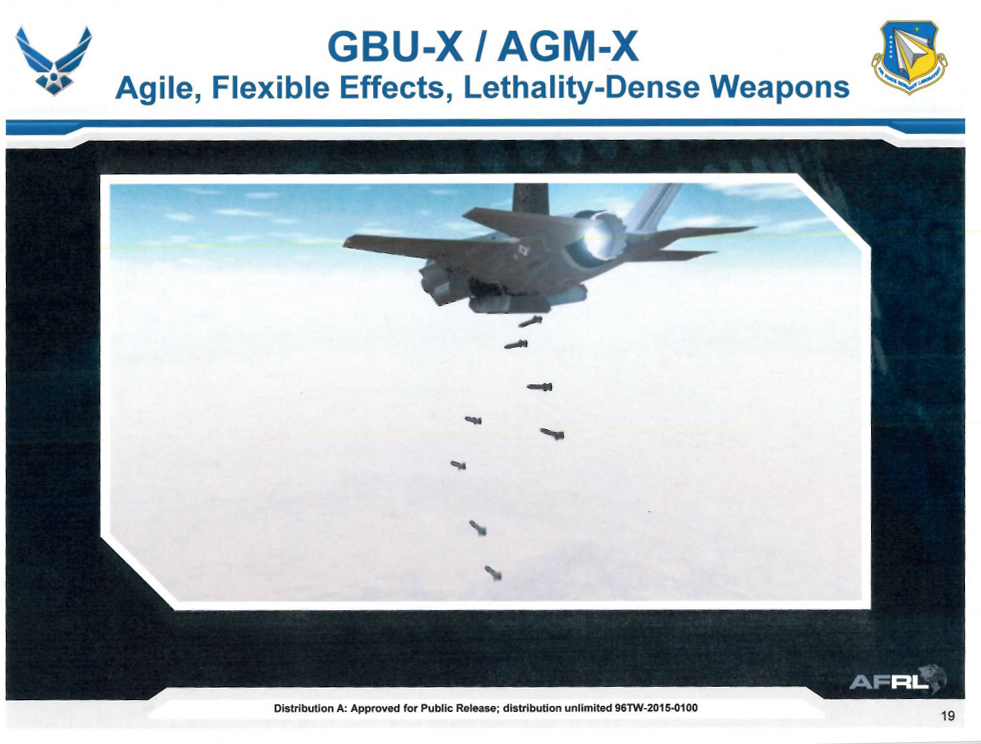
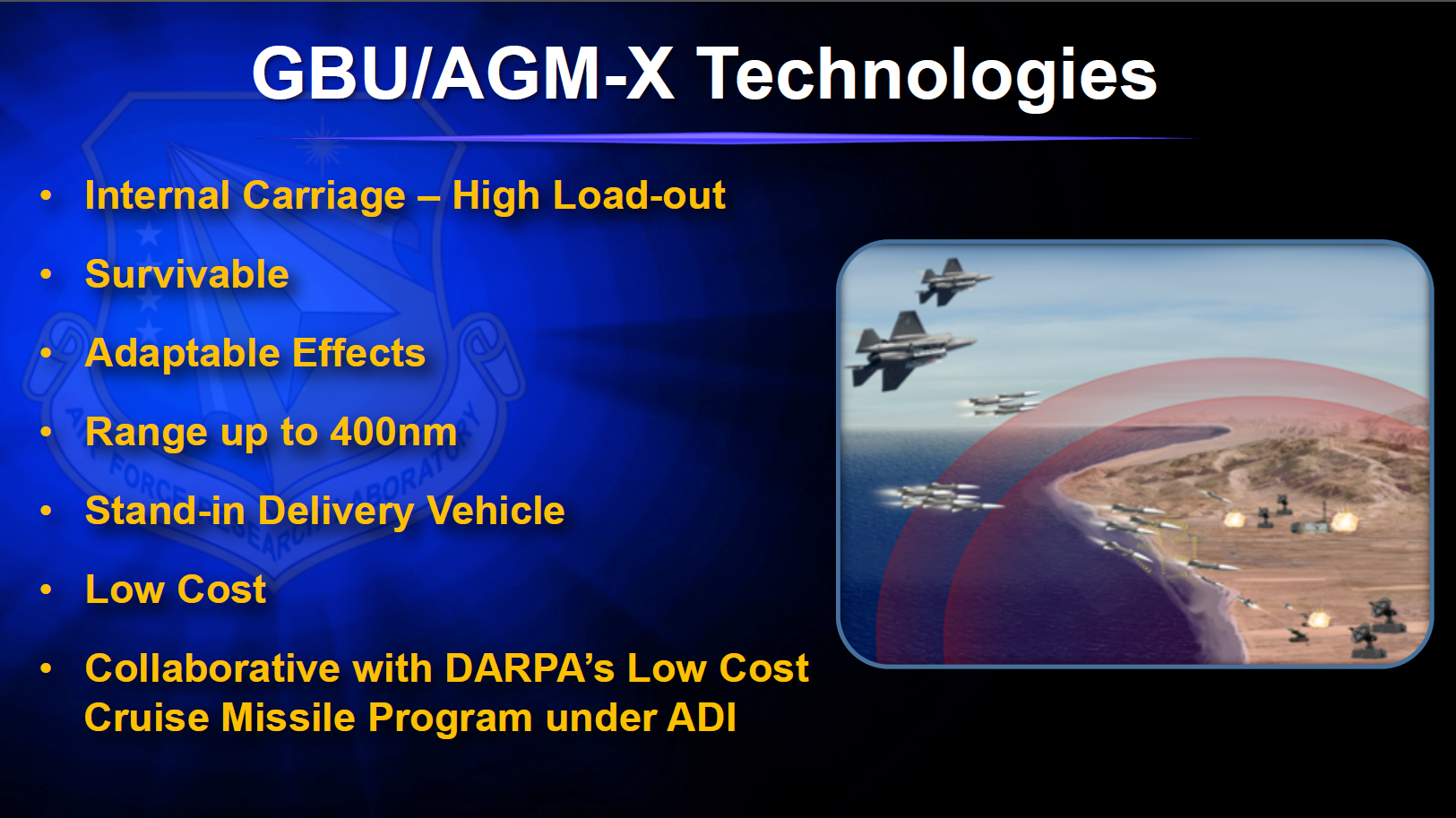
Harden targets aren't cheap to build, if you enemy can build thousands of them then you can by thounsand of missiles as welland then limited aircraft still have to defeat the hardened target in high hundreds but by up to thousands by 2050
Because they didn't take into account mini weapons such as SACM, SPEAR, SDB or AGM-Xaccording to RAND, if SEAD and Air Superiority are to occ ur. there will not be enough aircraft or missiles of for the millionth time.
Your rail gun ( if it can propel round to 1000 miles out) will be extremely big and as slow as Schwerer Gustav. Within hours of conflict with peer opponents, it will be destroyed by boost glider weapons such as TBG/AHW/ARRW/DF-17 or stealth cruise missiles such as JASSM-XR or air-launched ballistic missiles such as KinzhalBy 2050 the limited aircraft may start being attrited as much as 1000miles out. This no winner.
They do that because they want the development time to be shorter not because they want to put a rail gun on fighter.No airliners, Nex Gen fighters. The NGAD program which knows a conventional FA-XX wont cut it so is back to the Digital Aircraft Industrial Design revolution according to AW&ST.
All surface provide lift when you put them at positive AoA to the airflow that including the missile body, so nose control surface on guided round doesn't help it generate any more lift than normally possible. The control surface only behave as a pivot point, they are often put at the nose or the rear because longer pivot arms can generate higher torque. But the lift generated by the body and wing depending solely on their lift coefficient and area. It has nothing to do with whether you turn the projectile at the nose or the tail.Nose actuation provides maneuver sure but the real reason is lift for an otherwise not lifting body. Not aware that any missile is designed for additional lift w/ an actuating nose but would be great hear how much lift gain they are claiming.
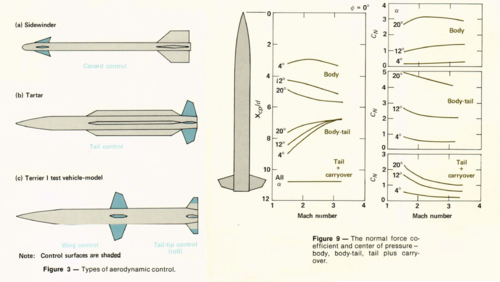
Even if the barrel is light, the power generator will be heavy still.You must not be familair w/ how light a light gas gun augmented by a railgun/coil gun can be. no physics broken in the patents. Especailly where modern material science is up to 2020-30s the timeframe necessary into 2050. relatively medium size Light gas guns can launch into orbit since the 90s. EM may be used only to assure frictionless launch.
Besides, I highly skeptical that they are indeed light like you think they are, even the Advanced Gun System weight 104 tons, unless there is a dramatic change in material science I do not think you can put a long range rail gun on fighter at all. If there is a dramatic breakthrough, they can apply that to missiles as well
I would choose "that never happened" for 50$. If you are well aware of TDOA, you wouldn't think ESM is a silver bullet against stealth aircraft.That is nice tutorial on datalinks that I was quite aware of for maybe 20yrs and a lesson on TDOA from about 30 yrs ago.
UV rays are only emitted by very hot sources such as the sun, missiles exhaust or flares. They are not even usable against fighter's exhaust. UV sensors are strictly used as missiles warning receiver and nothing else.. US aircraft dont even need to comm to be detected across the wide spanse of ocean.Well aware there are multiple means of stealth but ESM combined w/ other means even UV, bistaic HF radar etc. there will be no surprises to the PRC coast. Ripples in the EM curtain can not go undetected it is simply a challenge for processors. Threats and their processing are moving well along.
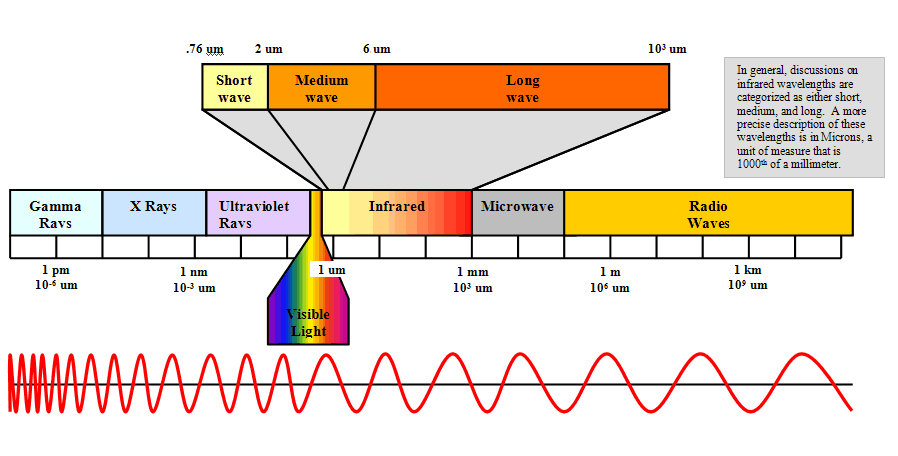
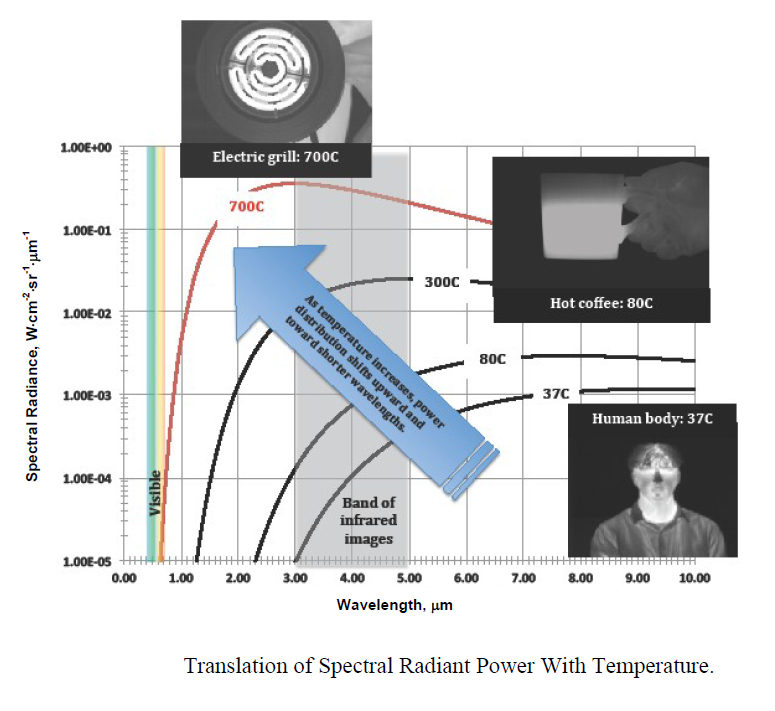
Bi-static HF radars/OTH-B sky wave radars has very long range, they can see over the hroizon and they can detect stealth aircraft. Unfortunately, in their skip zone they are blind, this skip zone is a 1000-1500 nautical miles pie area infront of the radar. Secondly, HF radar are very big and because they are too big, they can't move and very vulnerable to attack. By big, I mean their aperture are miles long. Thirdly, HF radars are not accurate enough to generate firing solution.
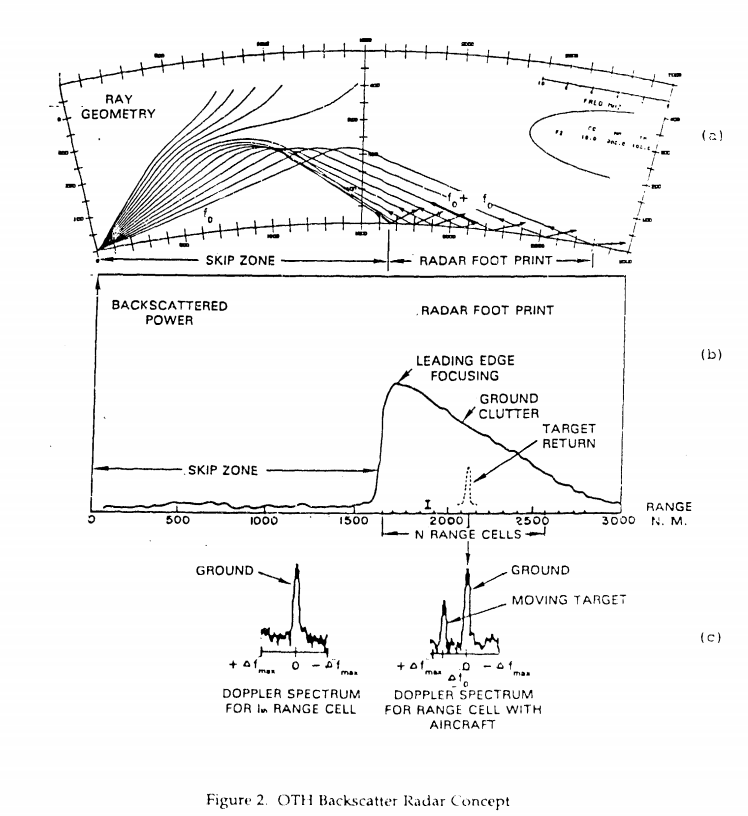
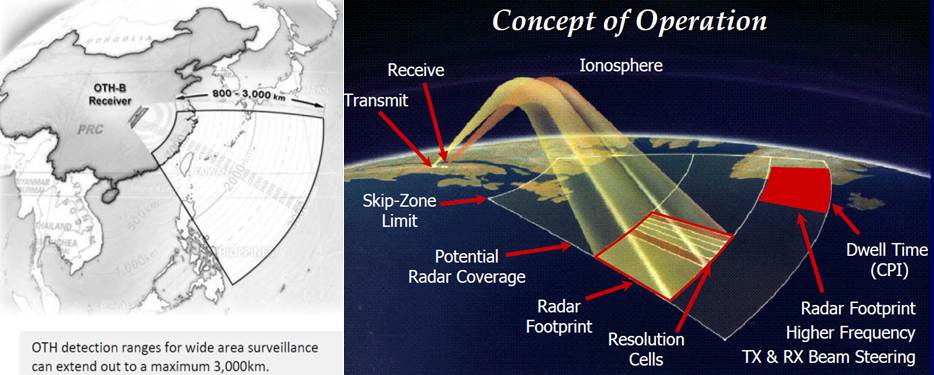
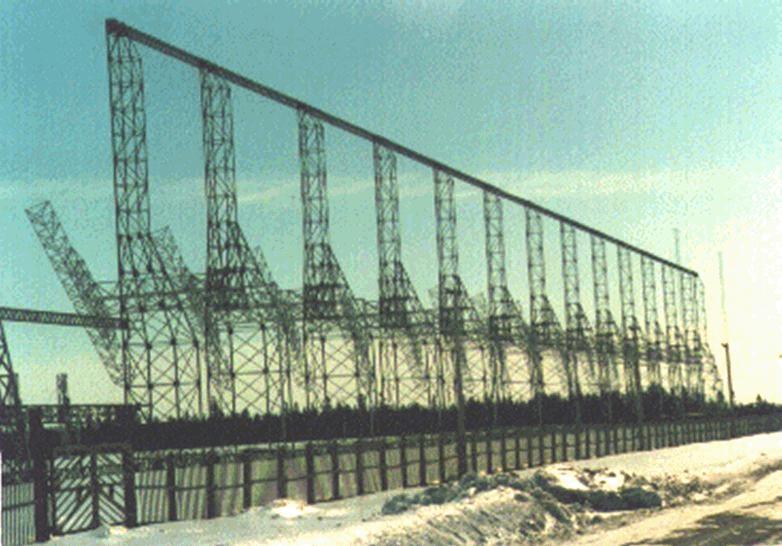
Last edited:
I feel like that maybe related to elevation?A Stryker Gun System Field Manual I can't find atmThe numbers actually stuck with me as it's kind of odd, (for example aircraft pallets have a similar but are listed as 8+/4-G and most others are similar so that one i would think should read "+7/-3" but It was the only one I could find with a quick search) In context it made sense since the paragraph was describing 'firing on the move' which used the example of firing in the air after coming off a slope and then again as it hit the ground. Whether you'd actually DO that at all I'd question but the autoloader is supposed to be rated for it.
+7G is incredibly high for a ground system
Same level of technology, a radar or Infrared sensor with smaller aperture will always easier to jam/spoof becaus for radar bigger antenna will give them better directivity, for IR sensor bigger lens can capture more signal. Miniature missiles such as CUDA, Peregrine have the same diameter as their big brother AMRAAM so there is no issue with them but 105mm and 120 mm rounds are both with smaller diameter than AMRAAM so their sensor aperture must be smaller.Smaller doesn't automatically mean easier to jam or spoof which (this would reverse apply to small missiles obviously and that's not true in their case either)
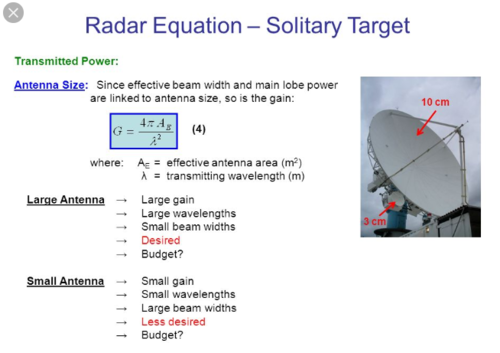
Nevertheless, higher capacity battery will allow your radar sensor to operate at higher out putBattery size has some effect on lifetime but keep in mind both the shell and missile will tend to have higher velocity than you keep thinking they will AND you have other methods to extend or supplment the battery for power.
for IR sensor, bigger missiles fuselage can carry more coolants which gives them more cooling time.
Can you cite a source, I am not aware that artillery shell can have lifting body.Artillary shell design includes base drag reduction and things like base bleed to extend their range which can be augmented by shell ballistic aero design. LIfting body shells have been tested
Missile can have big wings (even compare to their body) so they can turn better.small deployable aerosurfaces have significant effect as well.
Artillery shells can be rocket or ramjet assisted but still very significant part of their velocity will be at the barrelYou missed the fact these are assisted or propelled shells for the most part even in the original study. Further ramjet shells have been plausible for decades and are now coming into production which greatly extends the range and speed for the shells.
They can accelerate faster than missiles indeed. But once thrust ran out they decelerate quicker due to their mass and worse L/D ratio because of their lengthThe only correct assumption here is the shell is lighter than a bigger missile, somewhat than a smaller one but that also means it can accellerate faster and manuever better than a missile due to that reduced mass. Keep in mind that both solid and liquid propellant ramjets, (true of missiles as well) can be programed to adjust terminal approach velocity which is the whole point.
Artillery round doesn't maneuver better than missiles because artillery shell have smaller lifting surface relative to their size.
The cowl of a ramjet shell can't generate as much lift as the inlet on ramjet missiles such as Meteor because the cowl is circular, it pretty much has the same lift coefficient as the shell body. Whereas the 2 flat inlets on Meteor create a tunnel in its belly, at positive AoA this tunnel can stop air from just passing around the missile body, it has much greater lifts coefficient.So does a lifting body shell and the ramjet shells will use body and 'cowl' lift to extend the range even more. Strakes, wings, fins and engine cowl lift can (and are) all be applied to a shell as well as a missile.
In addition, i have never seen any guided shell with strakes, mid-body fins, I only saw small control surface at the nose end. I guess that because they need to spin inside the barrel so putting big lifting surface on them isn't plausible

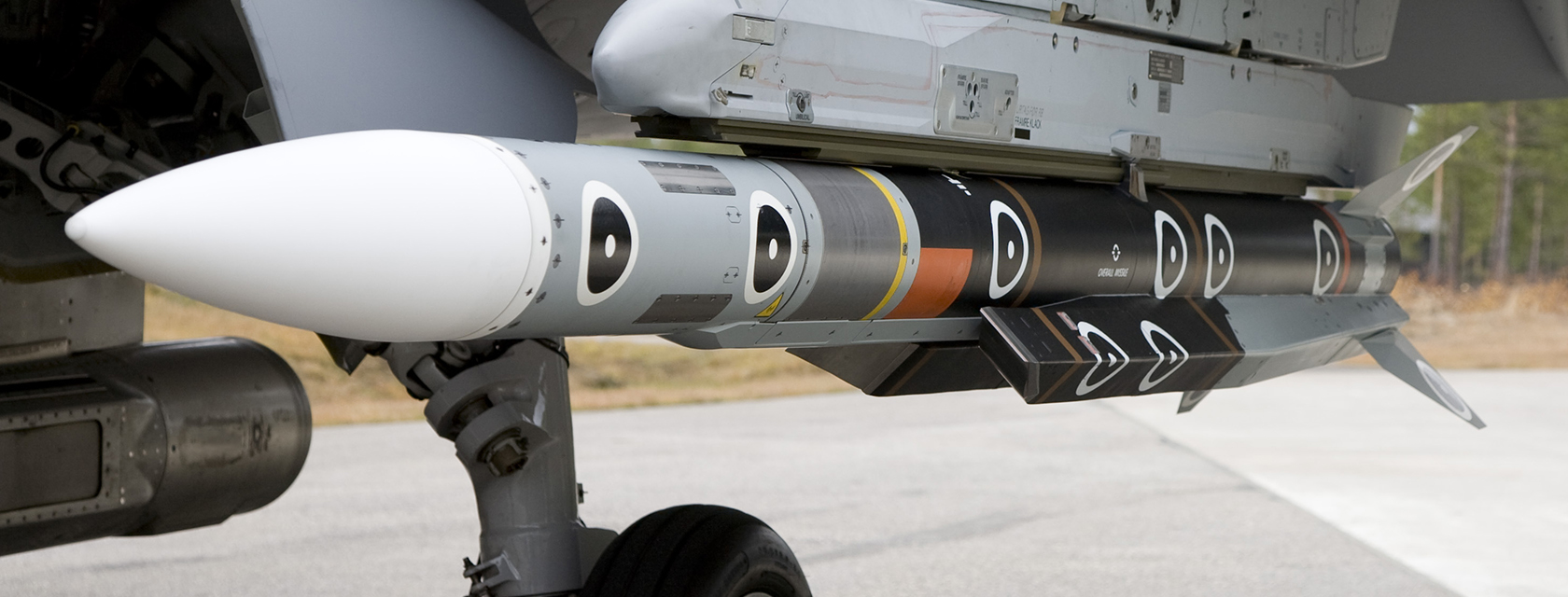
When you fire an artillery round the signal is still very significant, so if enemy can detect missiles through the infrared signature at boost phase they will also detect your cannon. In both case they have the initial alert. Then after that they may have longer tracking time of missiles, but still very far from terminal phase, neither the missile or the aircraft make significant maneuver when they are 100-200 km aways from each other. At end game, I expect missiles to have more energy than an artillery shell7/8 seconds is long enough to get a good track and begin evasion and counter-measures, Metor's end game speed is around Mach 5 which is around the burn-out speed of a ramjet powered artillary shell so the argument still works. The advantage the Meteor has is range but one of the reasons for moving to smaller missiles even for BVR is that larger missiles no matter their speed are still easier to track. And if you can track it you have a higher chance to counter it.
Nevertheless, rocket assisted and ramjet shell have a lot of energy, on the other hand they are equally as easy to track as missiles since they are pretty much the same
Can you cite a source, I honestly never seen a shell with TVCActually they can have TVC, (actually RCS would be a better desciption since it's more 'bang-bang' thrust in either case) .
I don't think the TVC of air to air missile is bang-bang thrust though
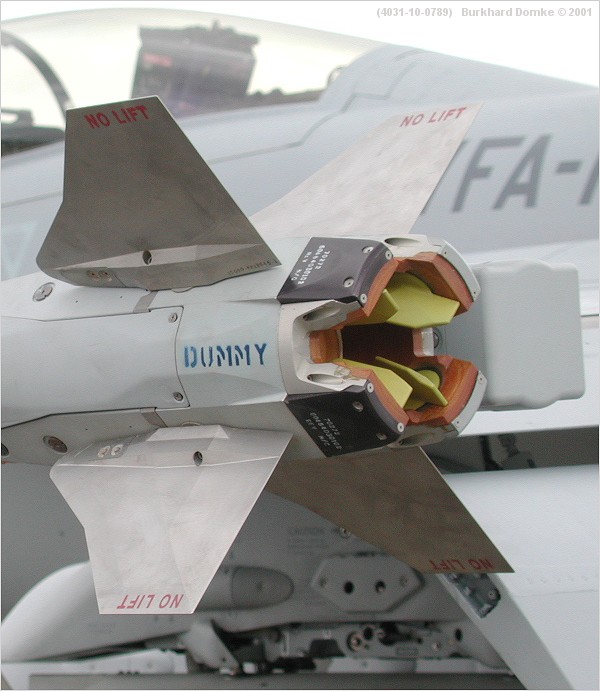
When I said shells have less lifting surface, I mean their lifting surface is much smaller even relative to their size, not just physically smaller. If you scale a guided round as big as a missile, it still has smaller lifting surface.you've already pointed out the shells needs less lifting surface to achieve the same effect since they will be lighter to begin with. So the competition isn't as far as you're making it out to be..

Last edited:
jsport
what do you know about surfing Major? you're from-
- Joined
- 27 July 2011
- Messages
- 7,736
- Reaction score
- 5,755
Franky dont' see anything much to address. This discussion is of dimishing returns.Is that the same study where they assume thousand of PRC aircraft just magically start on the air without any time for take off -landing?First.. will take Rand on whether there will be enough missiles and aircraft to surpress all PRC targets into 2050, SEAD does not happen .w/o something radical. Rand states the USAF will not prevail on the current procurement path.
Current rail gun being developed for US navy can reach 200 miles and propel rounds to Mach 7 but it weights over 100 tons, consume so much electrical power (25 MW) that only DGG-1000 can carry it and the barrel wear from acceleration mean your barrel can only be used for a few time. So for 1000 miles rail gun, you are relying on a gun system that doesn't exist, using generator that doesn't exist, with barrel material that doesn't exist, and yet your cannon still get out range by current and near future missiles, nevermind future one.Likewise other studies show ships magazines will be expended efore the Pac is secure. An alternative is the Army 1000mile gun, and or a ship supergun , and an aircraft gun eventually a tactical cannon fighter is ones only hope so we can keep on and on..
Future gun finished by 2050: max range: 1600 km
Kinzhal range: 2000 km
DF-26 range: 3000-4000 km
JASSM-XR range: 1600 km
AGM-86 range: 2600 km
AHW range: 8000 km
DF-17: 1800-2000 km
Not only your gun system will require some breakthrough in material science, it also lacks the range of current missiles and requires much bigger carrying platform. So to be Frank, I don't see it as the silver bullet you are trying to make at all.
What sensor will cue them?AHEAD are cued by multiple sensors not just the radar on the PRC mobile 35mm gun truck so.....The small UAS, mini- missile have get to past the thick AAA belts of a AHEAD and non AHEAD guns defended targets (they wont)
Radar: can be jammed by SPEAR-EW
IR and Visual sensor: miniature cruise missile are very small with low thrust engine so they are very hard to detect by infrared and visual sensors.
But that isn't the point, even when I do the courtesy of assuming your sensor working perfectly, they still only have about 1.7 seconds to destroy each missile because mini cruise missile can be launched in such great number due to their size.
It only gets worse since their range will improve as well


Harden targets aren't cheap to build, if you enemy can build thousands of them then you can by thounsand of missiles as welland then limited aircraft still have to defeat the hardened target in high hundreds but by up to thousands by 2050
Because they didn't take into account mini weapons such as SACM, SPEAR, SDB or AGM-Xaccording to RAND, if SEAD and Air Superiority are to occ ur. there will not be enough aircraft or missiles of for the millionth time.
Your rail gun ( if it can propel round to 1000 miles out) will be extremely big and as slow as Schwerer Gustav. Within hours of conflict with peer opponents, it will be destroyed by boost glider weapons such as TBG/AHW/ARRW/DF-17 or stealth cruise missiles such as JASSM-XR or air-launched ballistic missiles such as KinzhalBy 2050 the limited aircraft may start being attrited as much as 1000miles out. This no winner.
They do that because they want the development time to be shorter not because they want to put a rail gun on fighter.No airliners, Nex Gen fighters. The NGAD program which knows a conventional FA-XX wont cut it so is back to the Digital Aircraft Industrial Design revolution according to AW&ST.
All surface provide lift when you put them at positive AoA to the airflow that including the missile body, so nose control surface on guided round doesn't help it generate any more lift than normally possible. The control surface only behave as a pivot point, they are often put at the nose or the rear because longer pivot arms can generate higher torque. But the lift generated by the body and wing depending solely on their lift coefficient and area. It has nothing to do with whether you turn the projectile at the nose or the tail.Nose actuation provides maneuver sure but the real reason is lift for an otherwise not lifting body. Not aware that any missile is designed for additional lift w/ an actuating nose but would be great hear how much lift gain they are claiming.
View attachment 619542
Even if the barrel is light, the power generator will be heavy still.You must not be familair w/ how light a light gas gun augmented by a railgun/coil gun can be. no physics broken in the patents. Especailly where modern material science is up to 2020-30s the timeframe necessary into 2050. relatively medium size Light gas guns can launch into orbit since the 90s. EM may be used only to assure frictionless launch.
Besides, I highly skeptical that they are indeed light like you think they are, even the Advanced Gun System weight 104 tons, unless there is a dramatic change in material science I do not think you can put a long range rail gun on fighter at all. If there is a dramatic breakthrough, they can apply that to missiles as well
I would choose "that never happened" for 50$. If you are well aware of TDOA, you wouldn't think ESM is a silver bullet against stealth aircraft.That is nice tutorial on datalinks that I was quite aware of for maybe 20yrs and a lesson on TDOA from about 30 yrs ago.
UV rays are only emitted by very hot sources such as the sun, missiles exhaust or flares. They are not even usable against fighter's exhaust. UV sensors are strictly used as missiles warning receiver and nothing else.. US aircraft dont even need to comm to be detected across the wide spanse of ocean.Well aware there are multiple means of stealth but ESM combined w/ other means even UV, bistaic HF radar etc. there will be no surprises to the PRC coast. Ripples in the EM curtain can not go undetected it is simply a challenge for processors. Threats and their processing are moving well along.


Bi-static HF radars/OTH-B sky wave radars has very long range, they can see over the hroizon and they can detect stealth aircraft. Unfortunately, in their skip zone they are blind, this skip zone is a 1000-1500 nautical miles pie area infront of the radar. Secondly, HF radar are very big and because they are too big, they can't move and very vulnerable to attack. By big, I mean their aperture are miles long. Thirdly, HF radars are not accurate enough to generate firing solution.



am not opposed to AGM-X and small missiles but one needs a backup plan/augmention and thankfully the AFRL would appear to agree.
Neither of us have any idea what NGAD dev is directed but we do know the Army is spending $ on 1000mile gun. The AF is spending money on as many as two airborne railguns has patents on them.
You have no knowlegde of light gas gun technology so appear to be missile salesman.
Jets make powerful generators and the EM may be only for frictionless not firing as stated repeatedly though the months of this thread. On and on discussion about railguns is a lark. Coilguns also can be made very light anyway.
Lightweight light gas can be used literally as global guns which NASA has addressed at a threat in the 2020s and beyond timeframe and is on this forum but not this thread.
Never said how many aircrat the PLAA would be taking off. What statement makes clear there is no understanding or familiarity of the RAND study or what it concluded so this argument is in the ether.
The 1000s of hardened structures refers cruise missiles sites, likely superguns (have no specific knowledge but well known research from Dr Bull times and pics, depictions) sites , mobile hypersonic UCAVs hidden in numerous fixed sites, same for Hypersonic missiles sites, Mobile SAMs including S-500. Most importantly redundant concrete shelters for aircraft. Concrete is cheap w/ plenty labor available. Mobile and fixed c2 sites etc etc.. As in NK, if it is above ground or not hardened it doesn't matter.
UV is sed in AD so not sure what you appeared to getting at.
Sensors always work in an integrated fashion and is why it is called and Integrated Air Defense System (IADS), So larks you are throwing. During a crisis China will know when every plane takes off from any US territory or ship and that will used to cue the up to 65,000 unmarked vessels (some of which are deep water capable) and cueing would continue on and on till in target aquistion.
Similar threads
-
-
Battleship revolving cylinder guns
- Started by MadRat
- Replies: 3
-
Alexander P. de Seversky's predictions from 1942
- Started by Avimimus
- Replies: 2
-
Unknown Rheinmetall 75mm mortar/RCLR weapon system
- Started by monochromelody
- Replies: 5
-

